Table of Contents
This post may contain affiliate links. As an Amazon Associate we earn from qualifying purchases.
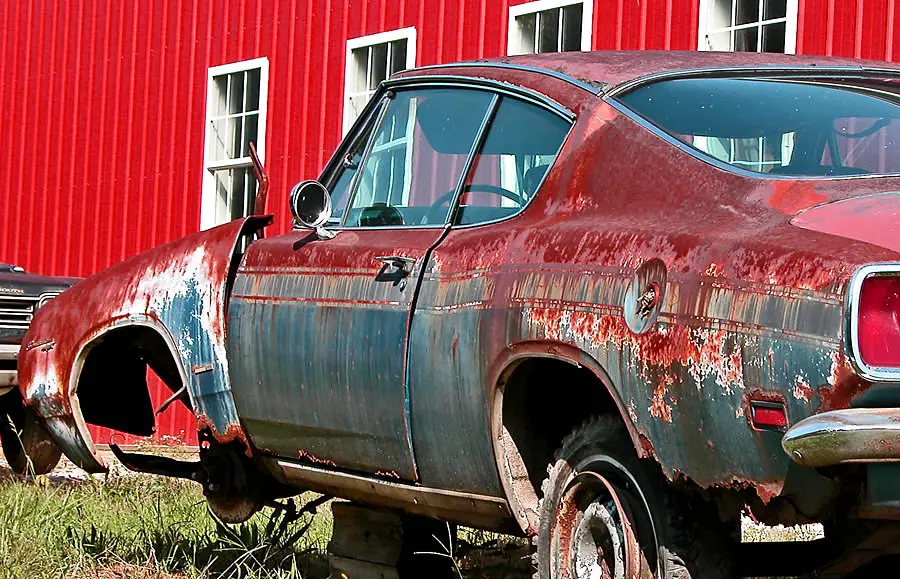
Rusty car on blocks in Ross County, Ohio; Image from Attribution 2.0 Generic (CC BY 2.0) by Don O’Brien via Flickr
Have you seen that neighbor’s car? You know the one we mean: it’s up on blocks, the weeds have grown up all around it, and it’s now so rusty and faded that you aren’t completely sure what model the car might be. Forget figuring out how to remove rust from cars like that: they practically need to be rebuilt from scratch.
Your car will never look like that, right?
If you let a rust problem get out of control, it very well might. Rust can ruin your ride, tank your resale value, and just plain look ugly. Fortunately, there are things you can do to prevent rust. If you do get rust, you can learn how to remove rust from car bodies, fenders, and other parts.
Wait. What Is Rust, Anyway?
Good question.

Technically, rust is iron oxide. This is what happens when iron and oxygen interact in the presence of moisture. That moisture can be actual water, or it can just be damp in the air. Iron rust almost always appears red.
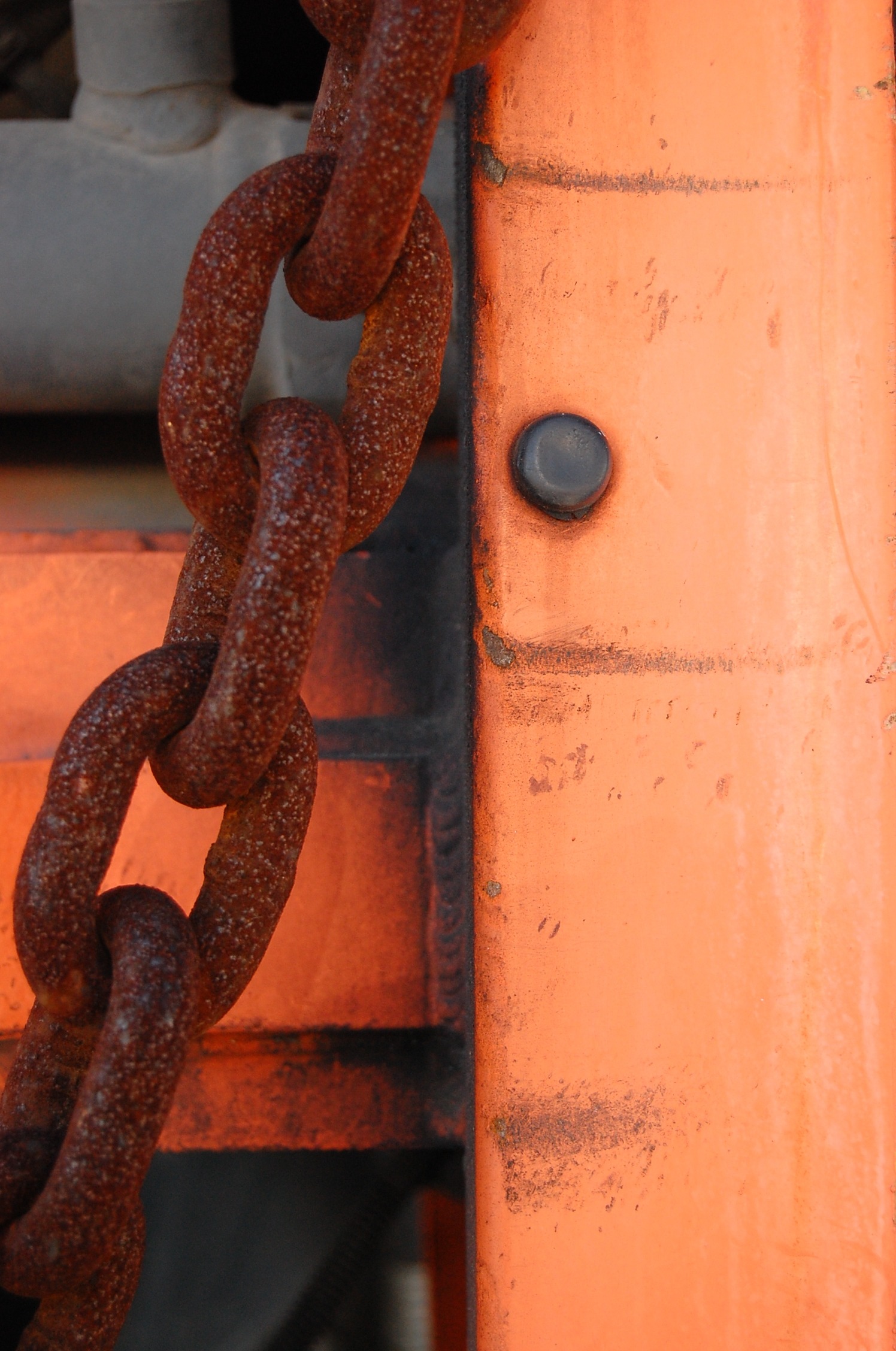
Iron isn’t the only metal that reacts with oxygen to do bad things in the wet. It’s just one of the most distinctive. Some metals “rust” but this just appears as a tarnish rather than the distinctive red of iron oxide.
Even gold and platinum rust, though their rusting process looks nothing like the bike you had when you were 10 that you’ve just found in your parents’ basement. Aluminum rusts too, but it is very slow to do so and requires heat as well as moisture.
Copper rusts by turning green. In common practice, we tend to let copper turn green, as you see on old buildings or the Statue of Liberty, because the rusted part forms a protective patina for what’s underneath.
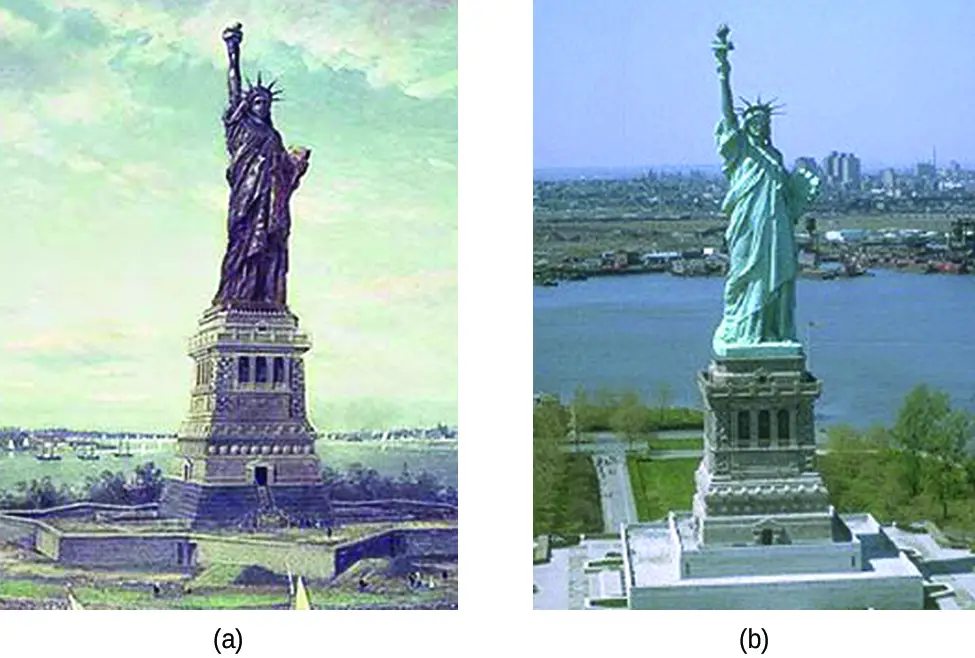
Statue of Liberty then vs now; Image from Creative Commons Attribution 4.0 International by OpenStax via Wikimedia Commons
The same can’t be said for the metals that make up your car, though. Rust is going to eat away at them, which brings us to:
Do All Cars Rust?
Sadly, yes. Now we’ve come up with some impressive ways to protect against rust in the modern era, and we use more aluminum and plastics in production than ever before. All that means it’s much less likely that you’ll see a car like this…
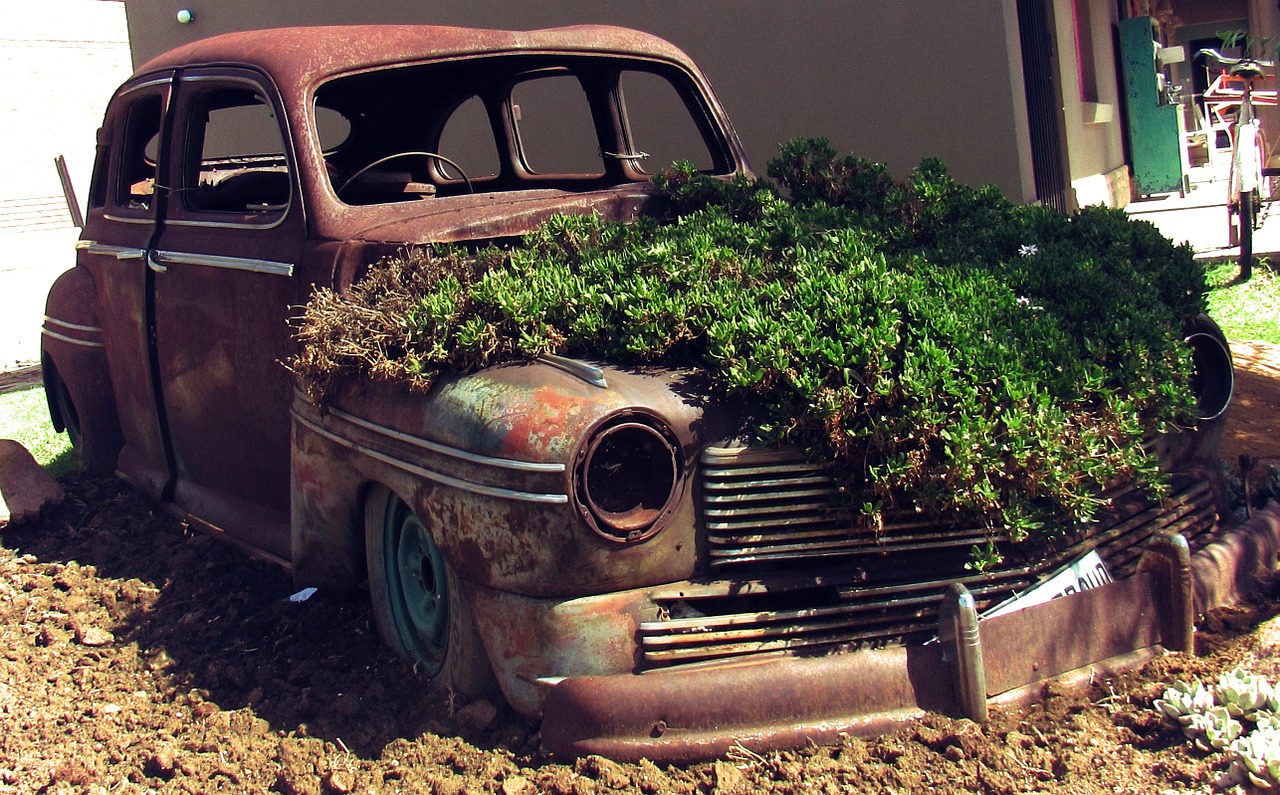
…than it was in your great-grandfather’s day. But we haven’t completely beaten the process. As long as there is any metal in a car, there’s something that can rust. And rust just loves to spread.
There are some cars that are better at resisting rust than others. If you live in an area where rust is an issue, there are some cars you are best off avoiding and others that you should consider.
Cars to Avoid
Mazda
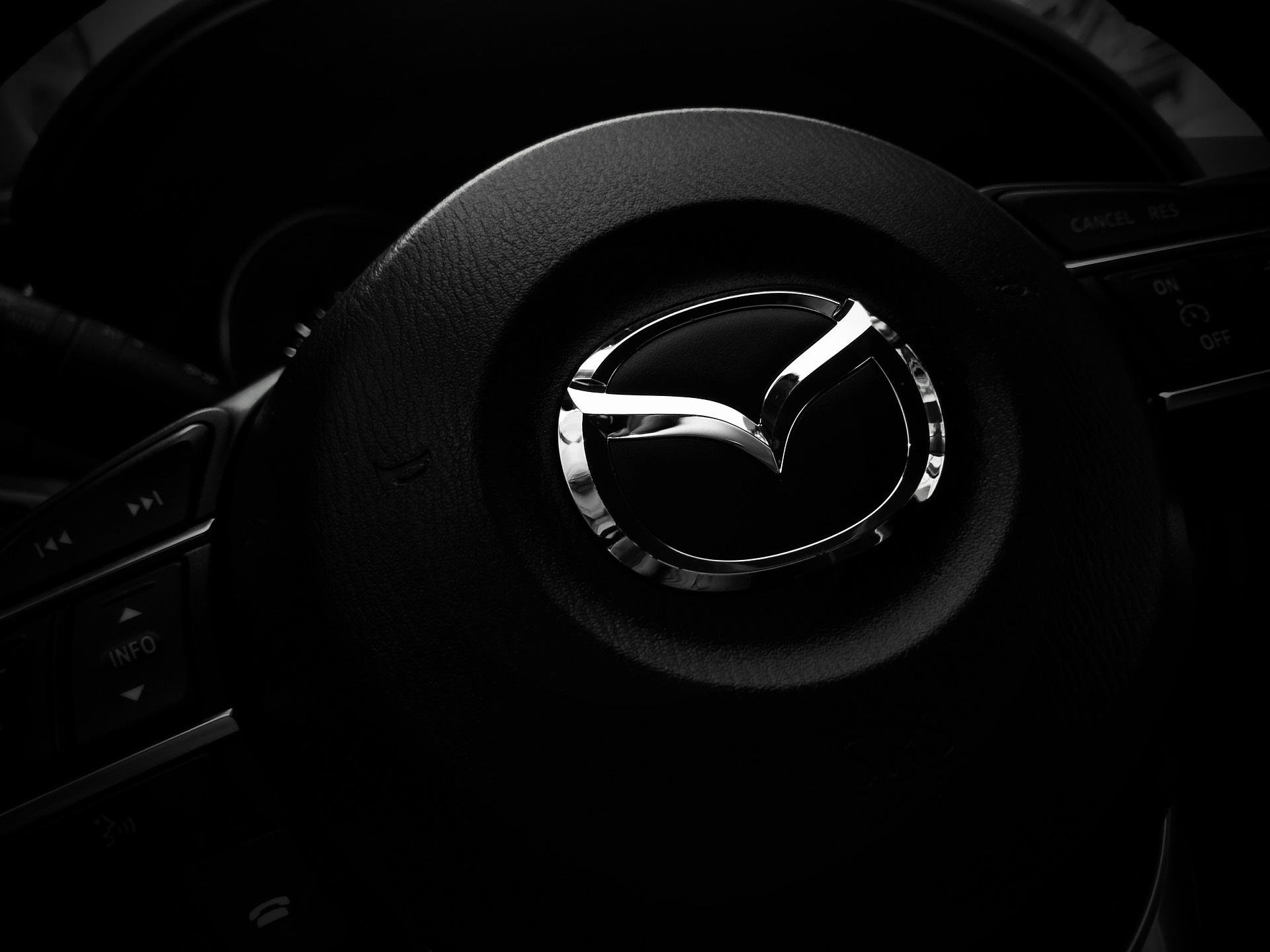
This company has the dubious honor of being named Worst Rust Resistant car on the market by the Automobile Protection Association. The Mazda Tribute is the worst.
Jeep

This is a surprise. Jeep came into its own during World War II, and you would think that a company founded on the idea of building cars that could drive people around in a war zone would have thought about stopping rust. Unfortunately, no. Jeep vehicles have a bad rating in this area.
Ford
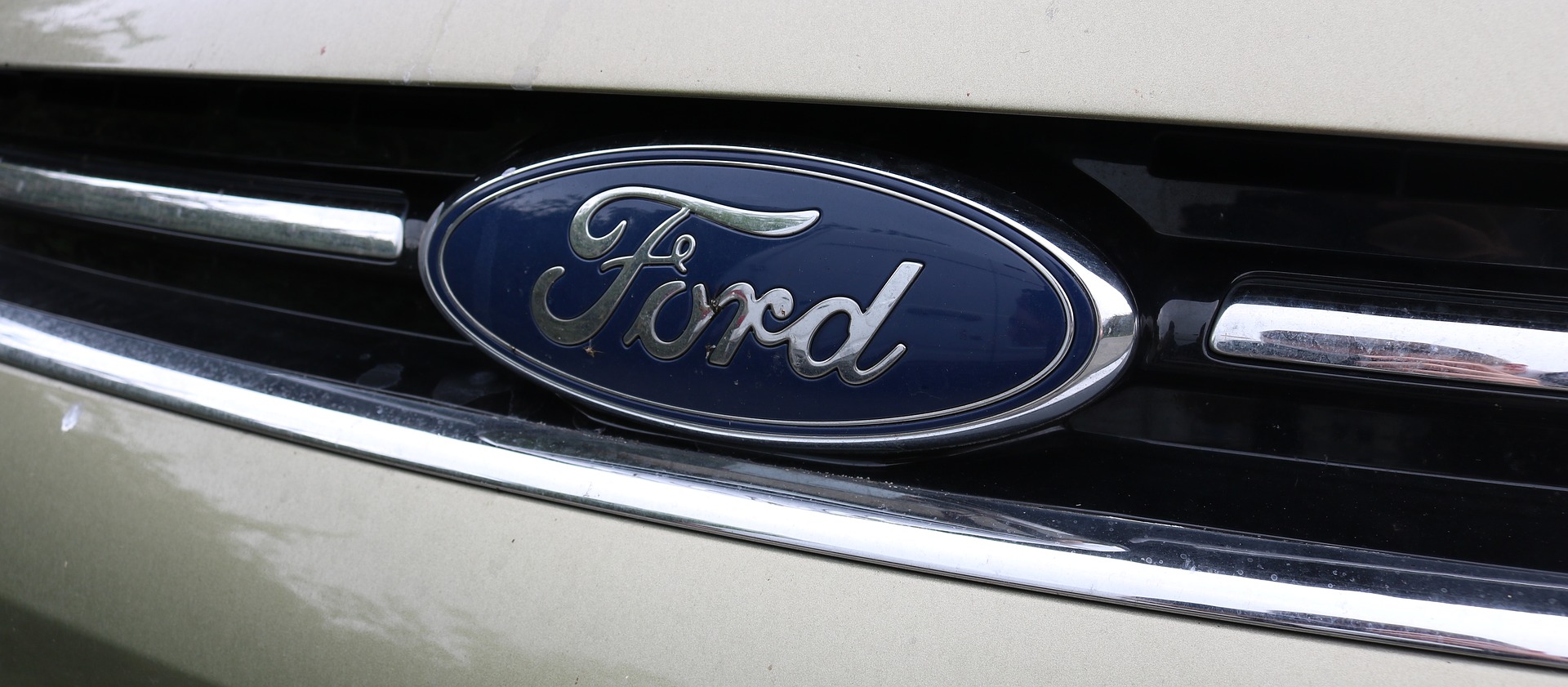
Yup, sadly the Explorer, Focus, and Escape: there’s no escaping Ford’s rust problem. These three are the worst of the bunch. For those of you who love Ford’s trucks, don’t worry: the F-series trucks do better in this regard.
Saturn
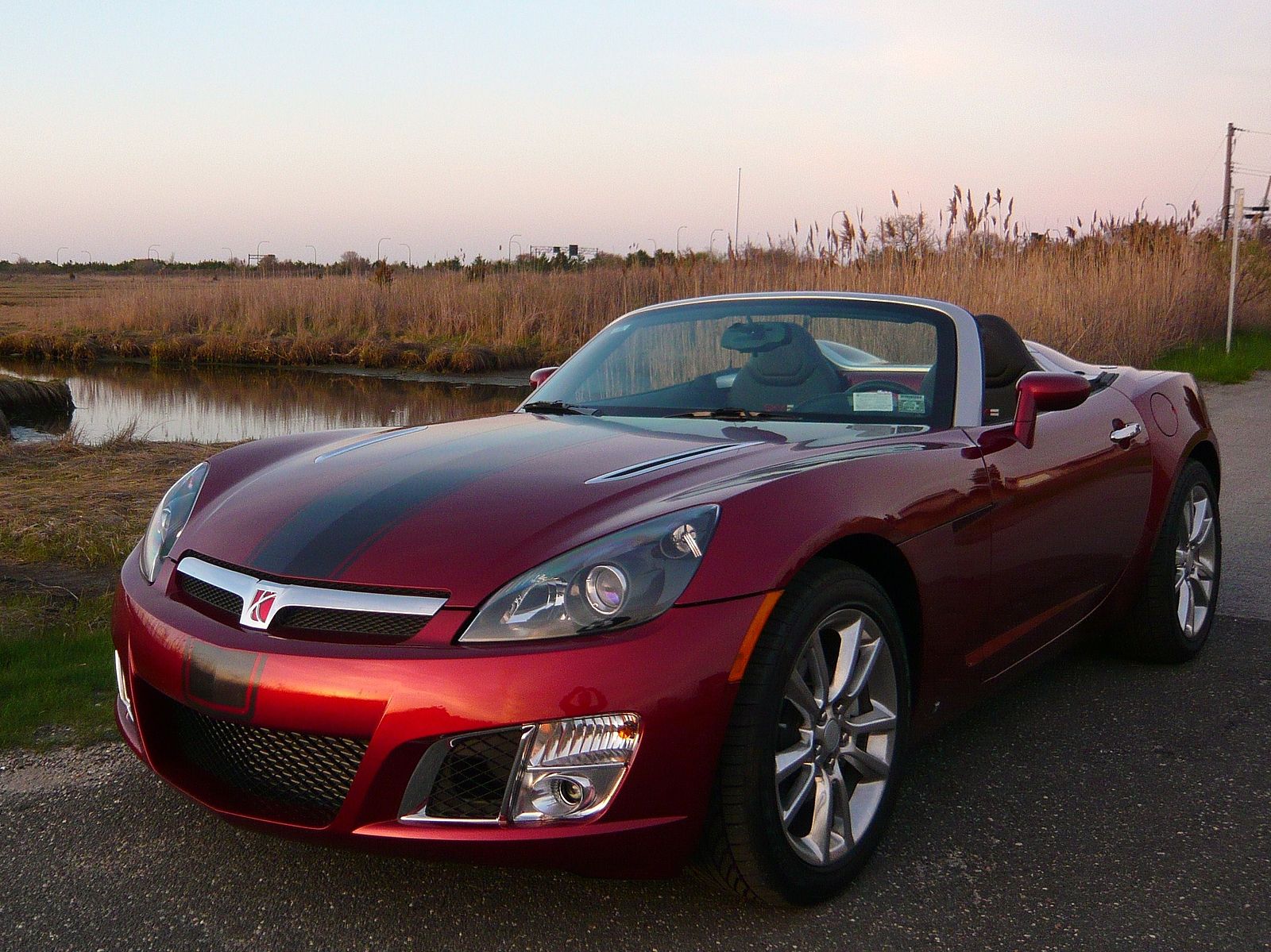
Saturn Sky Redline Ruby Red Limited Edition; Image from Creative Commons Attribution-Share Alike 3.0 Unported by Reedred via Wikimedia Commons
Saturn isn’t producing cars anymore, and as far as rust goes, that’s fine with us. Saturn’s cars got no rust protection at all when they came shuttling off the line. You had to do it all yourself or learn how to remove rust from cars yourself. If you’re looking at a used Saturn, beware.
Buick
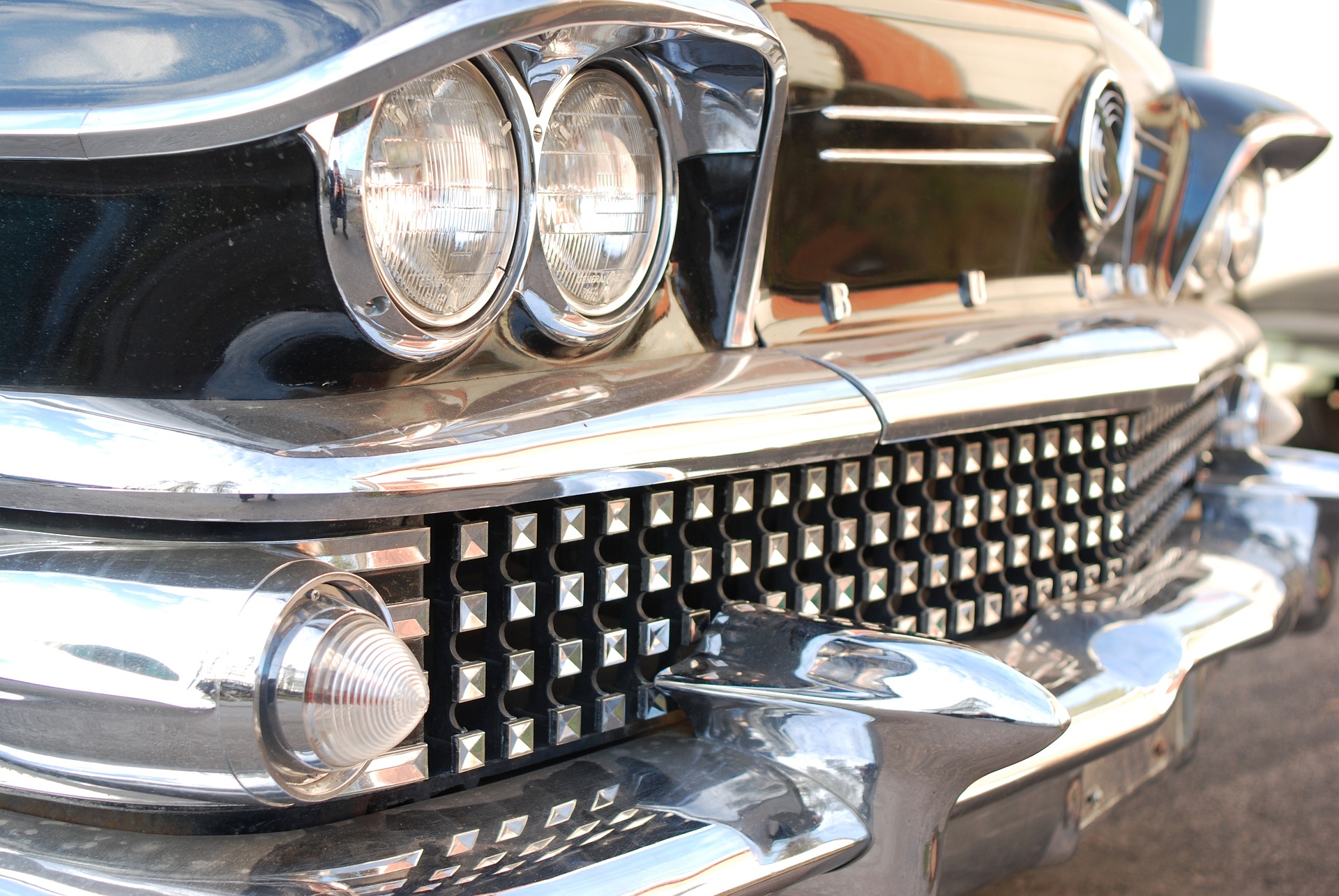
Some of Buick’s offerings are fine, but the Rendezvous and the Terrazas aren’t some of them. Once again, the original owner needed to apply an anti-rust solution almost immediately, or the rusting process would begin. Check used Buicks carefully.
Suzuki
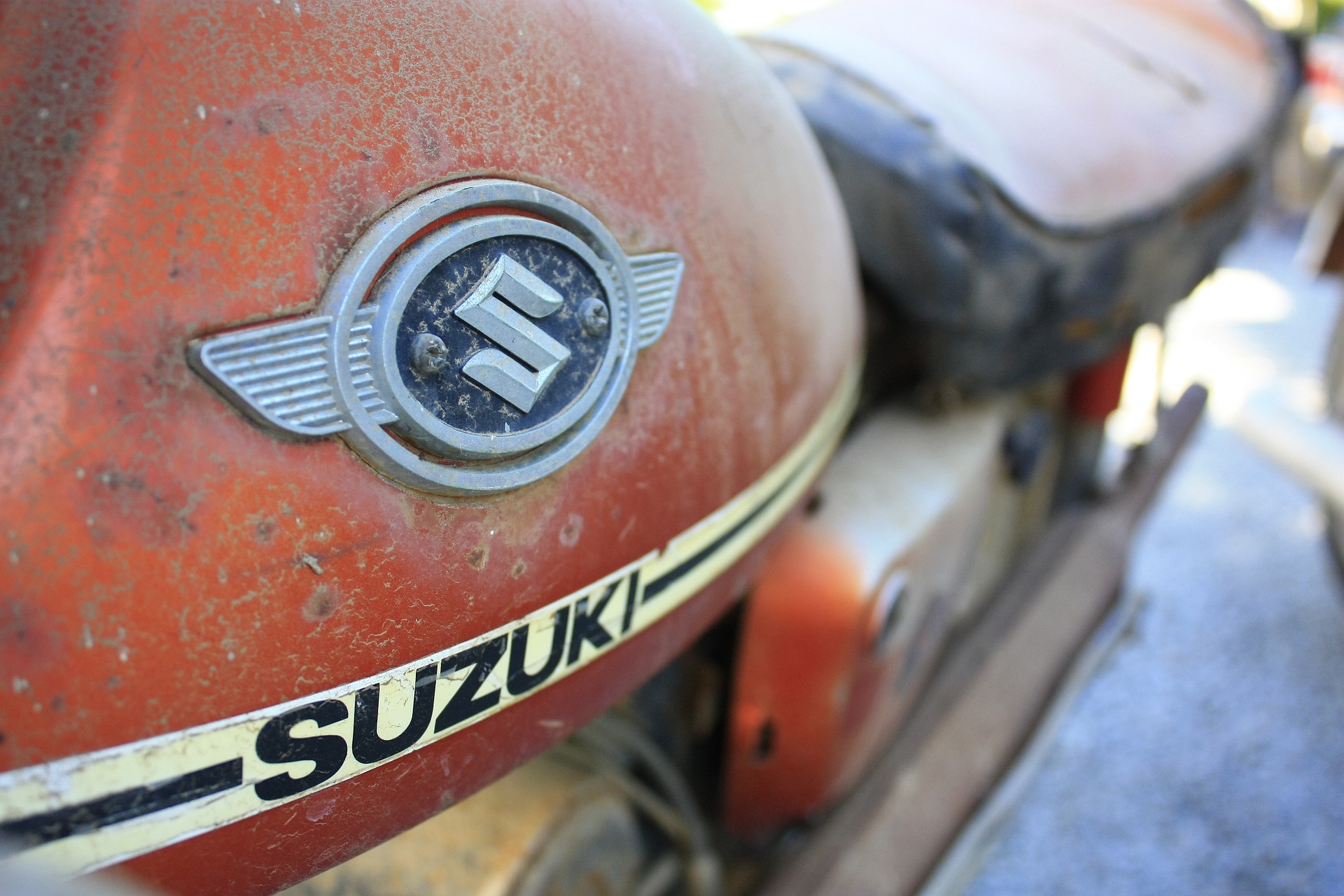
The Suzukis have some rust protection, and it does work. The protection isn’t robust, however, and if you live by a coast or in a place where winter brings a lot of salt to your roads, you’ll notice.
Nissan
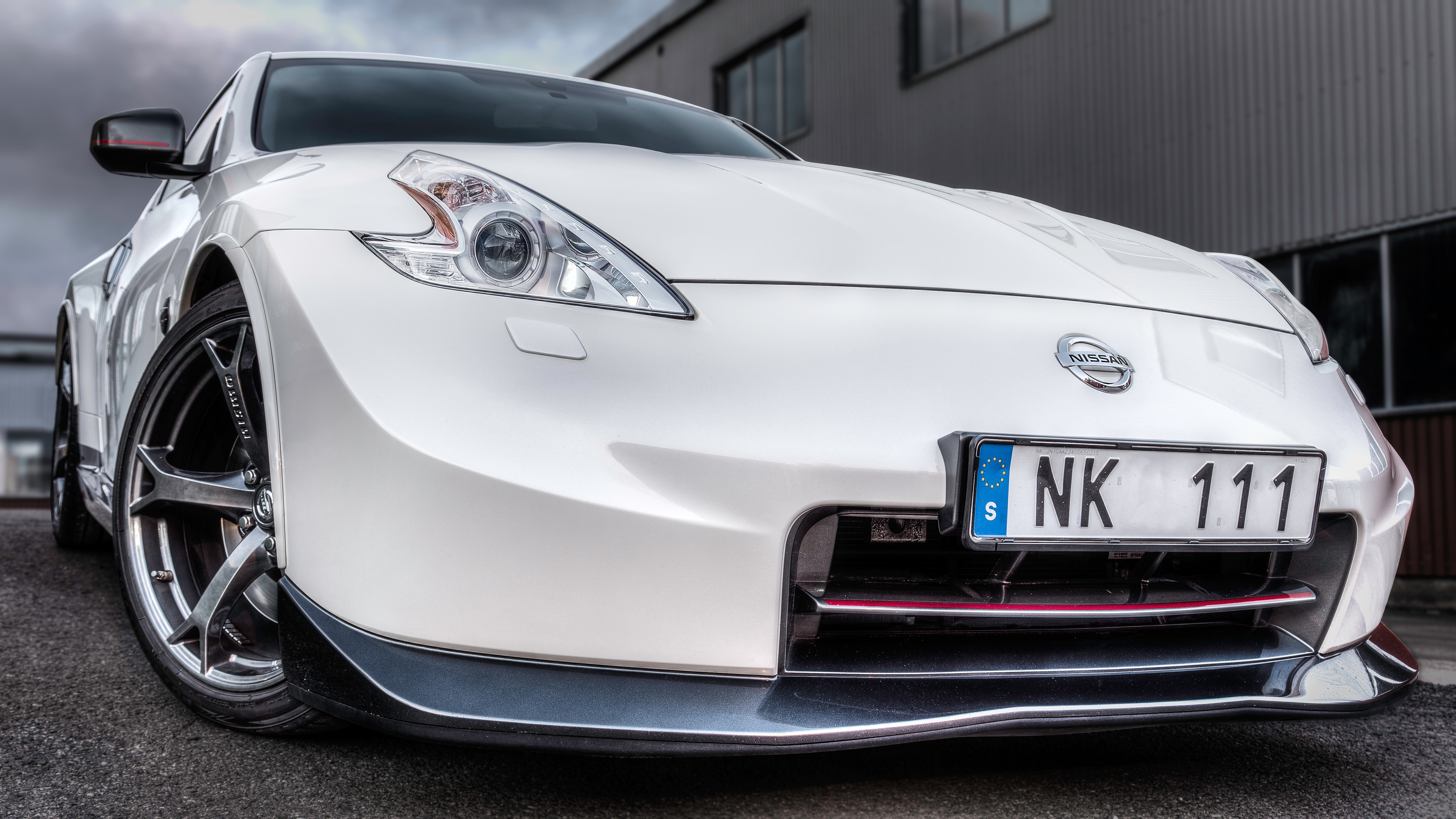
Nissan is getting better, fortunately, but they’re still not the best on the market when it comes to rust protection. New ones are probably fine: check used Nissans carefully and investigate the average rust rating for that year you’re looking at.
Chevrolet

The Cobalt, Uplander, Aveo, and Equinox have barely average rust resistance. It’s there, but you can do a lot better.
Cars to Consider
Audi
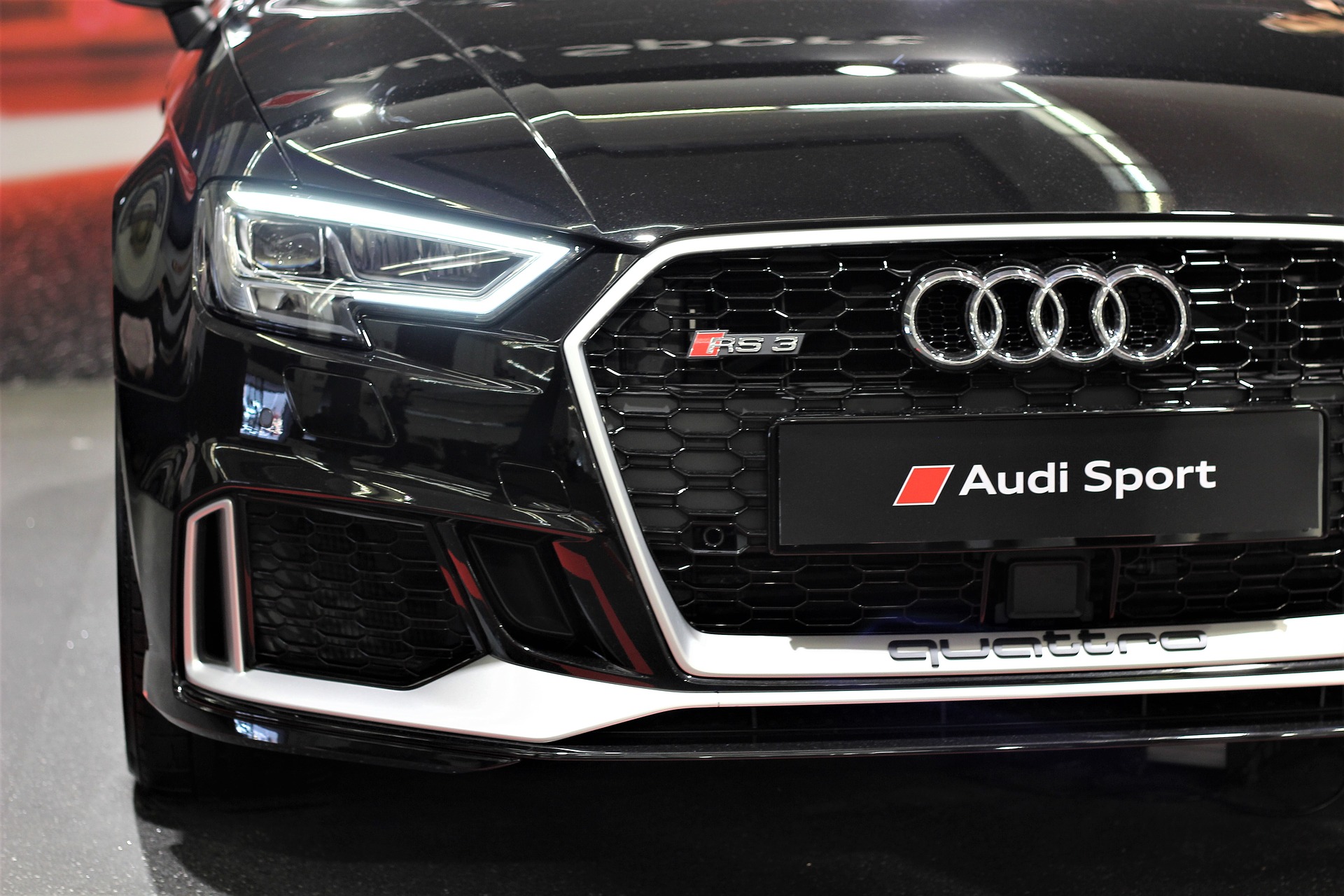
The A3, A4, and S4 are some of the most rust-resistant cars available fresh from the factory.
Volkswagen
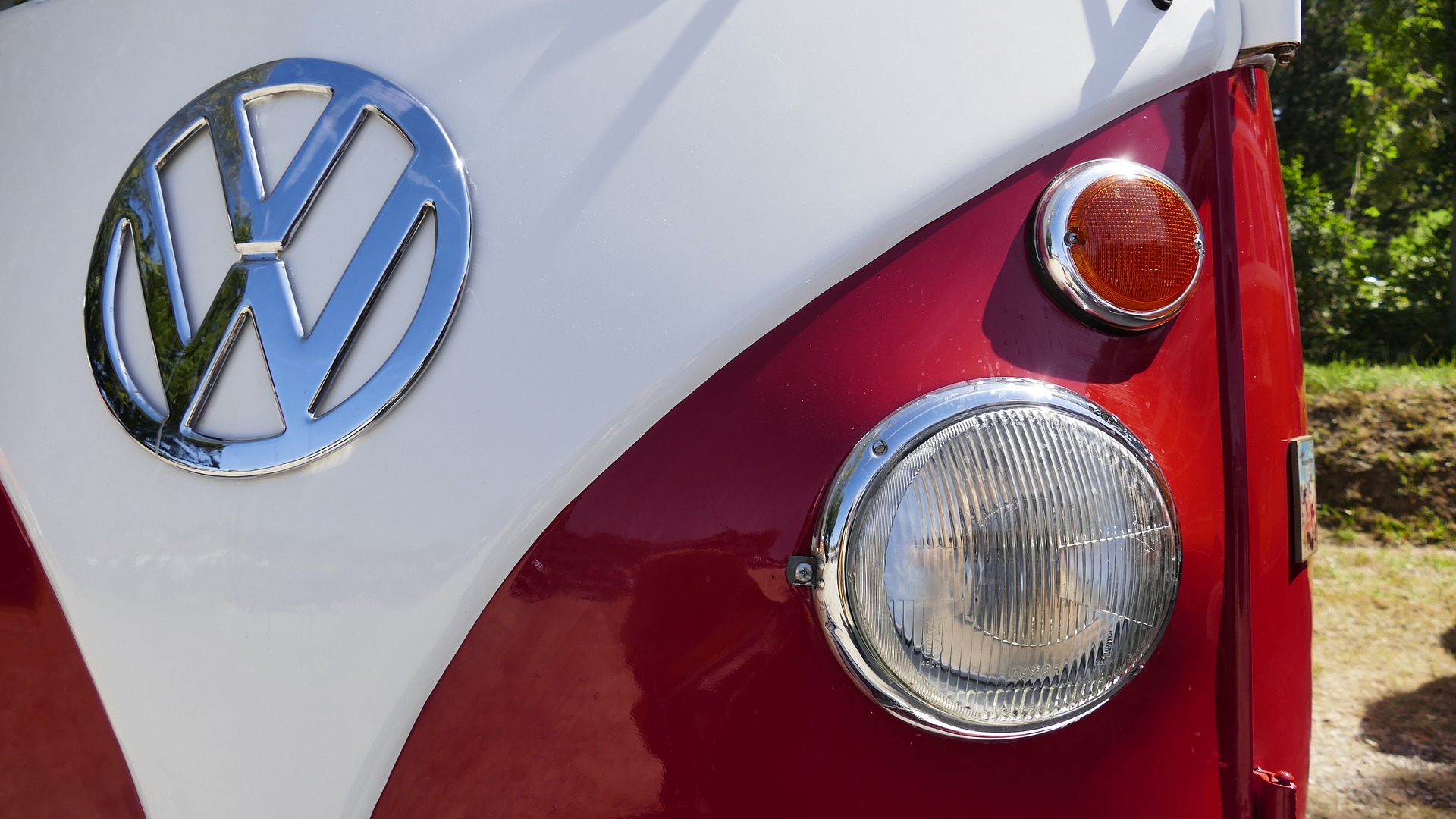
Everything that this company makes, from the Golf to the Passat, the Beetle, comes with strong resistance from the factory.
Volvo
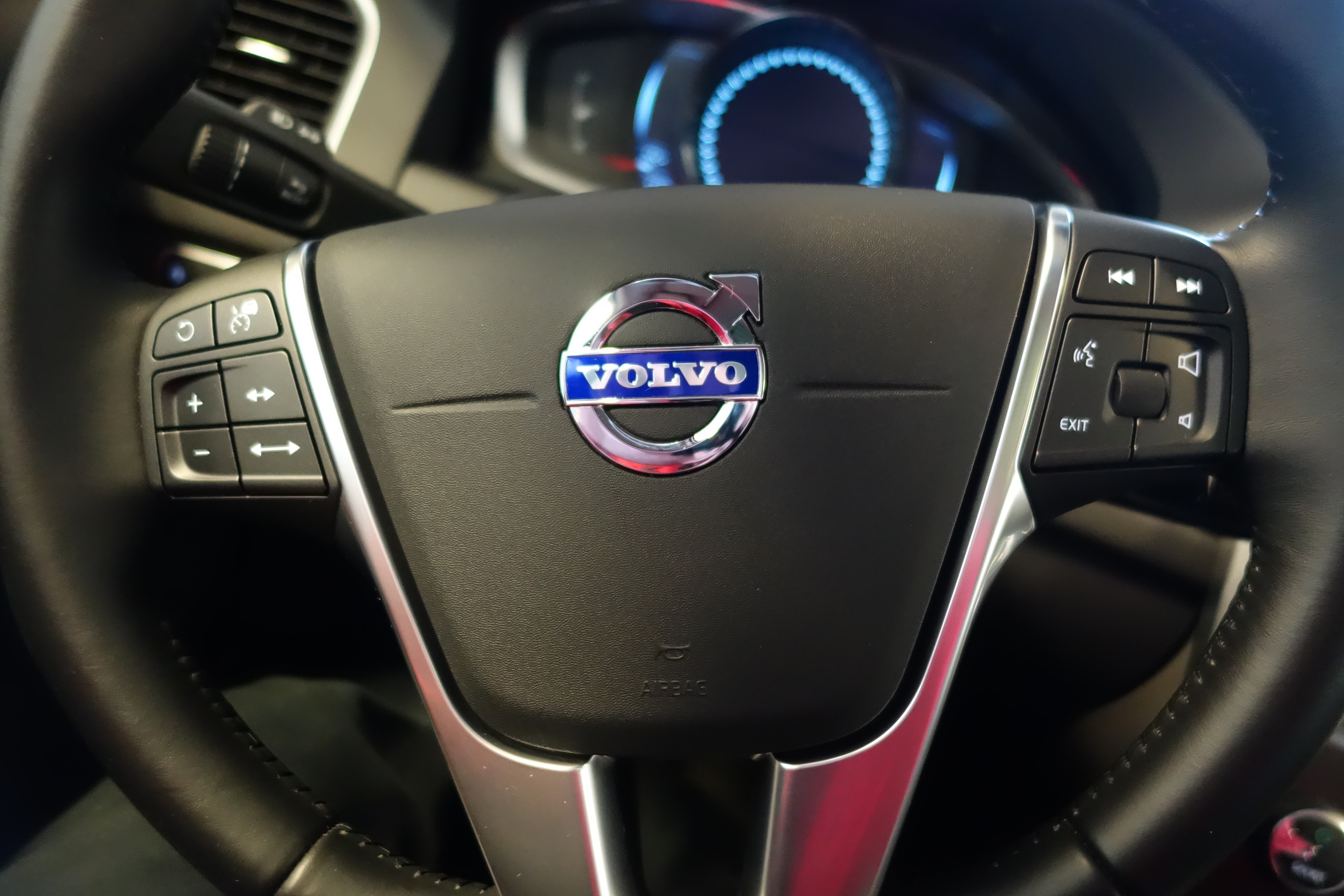
The S40, S60, V50, V70, and CX 70 models are all rated excellent in terms of rust protection.
Mini
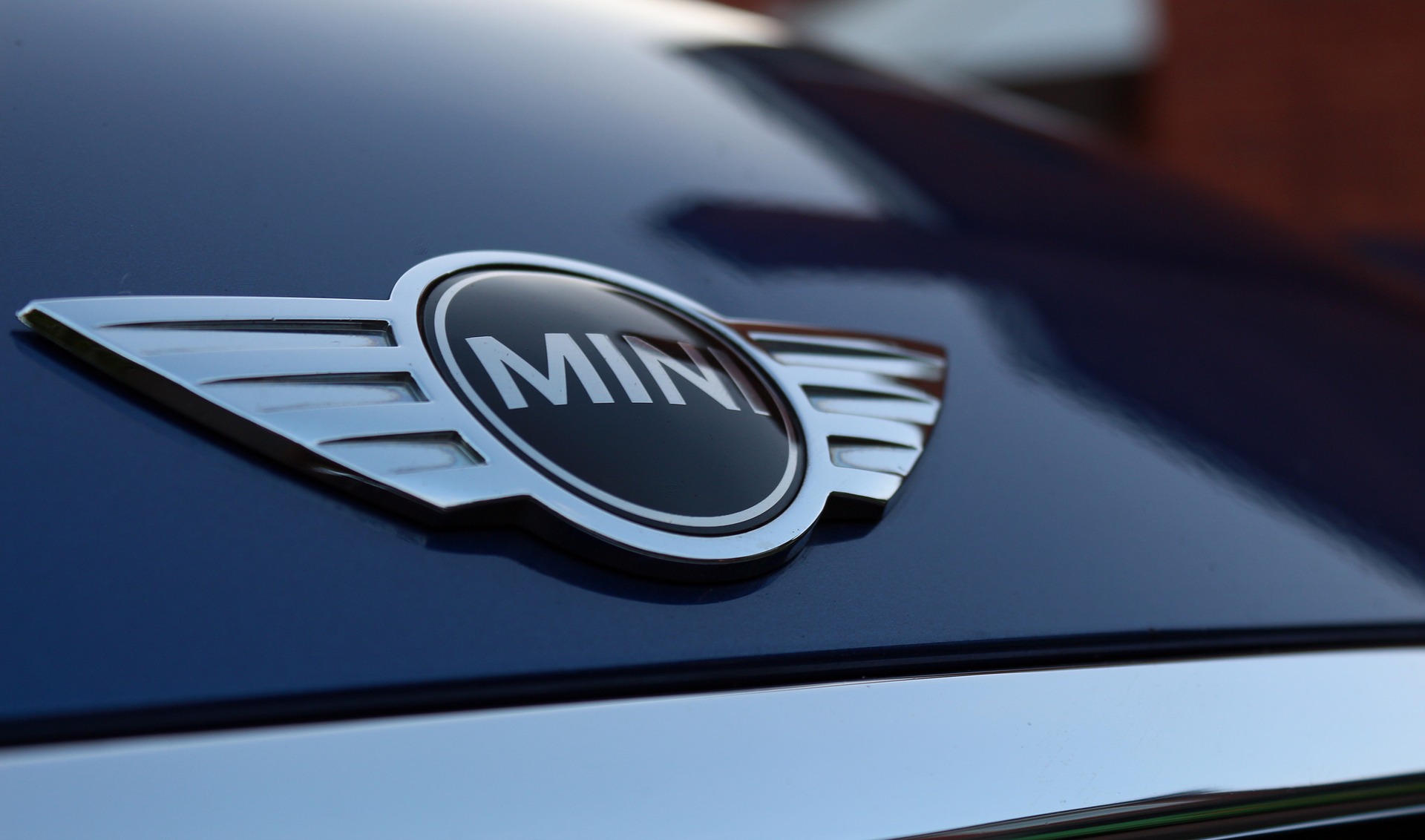
The Mini Cooper and the Mini Countryman all earn a good rating. You can make this even better by adding some extra protection yourself.
BMW
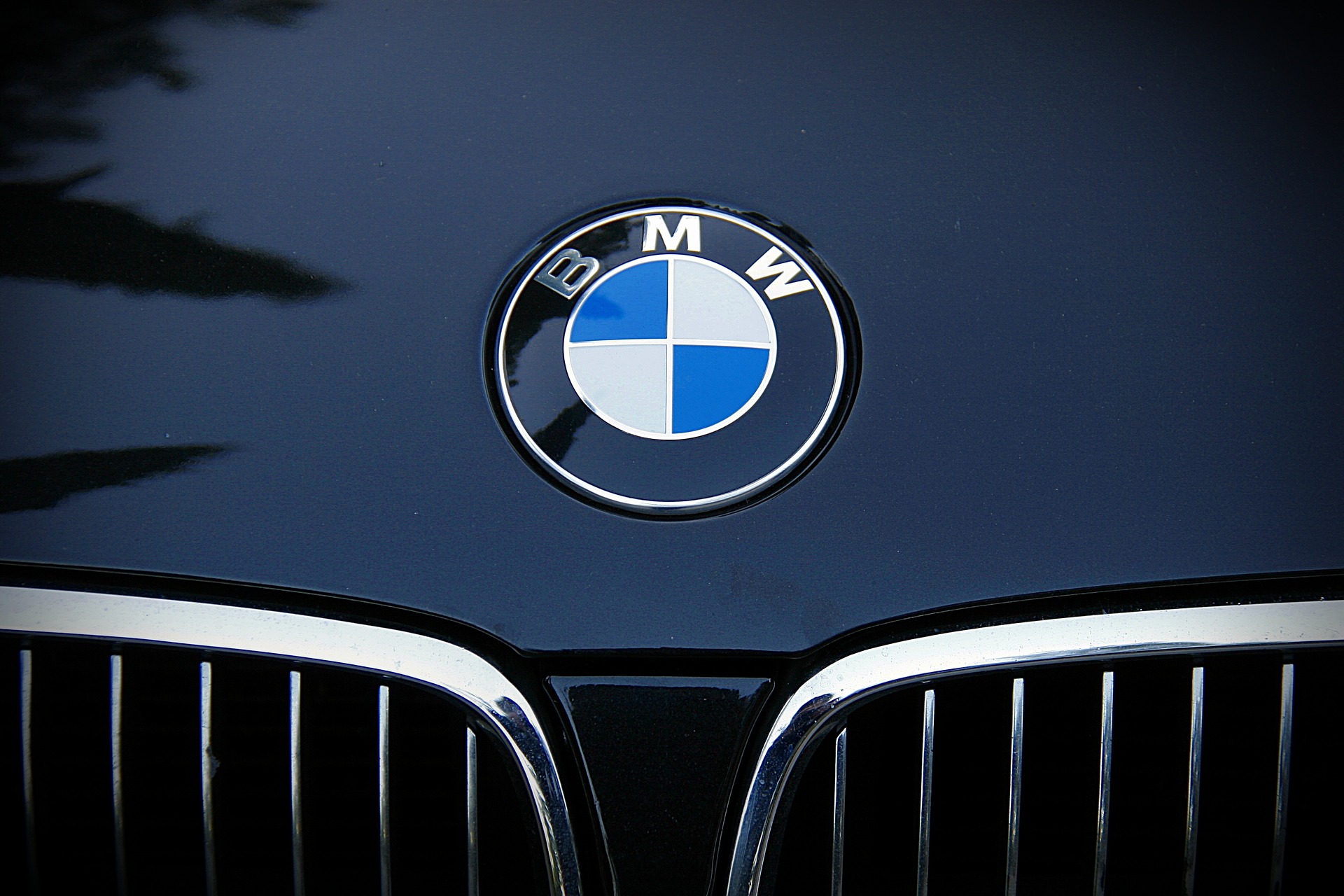
Most of BMW’s cars are going to give you good protection, and especially the 3 series.
Honda

Honda has a good reputation in general, and that doesn’t fail them when it comes to rust. the Fit, Accord, Odyssey, and Acura TL all have good protection. The Civic, Acura CSX, and CRV are not quite as good.
Toyota

Another big player with a good rep. The best cars from Toyota in terms of rust are the Camry, Highlander, Matrix, Prius, Sienna, Solara, Venza, and Yaris. The Corolla, RAV4, and 4-Runner have some issues, but nothing like the cars on the “naughty list.”
Mercedes
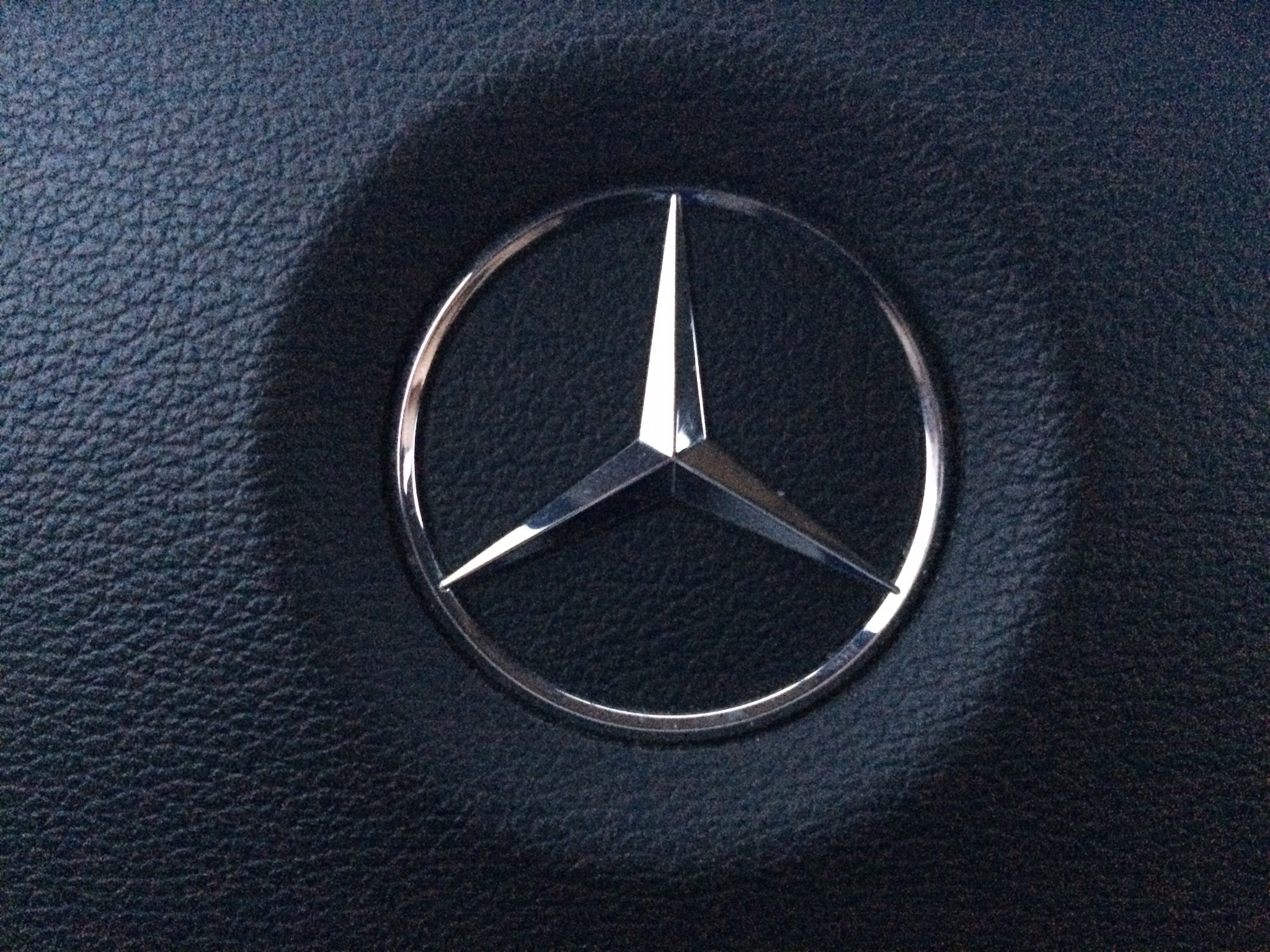
The C Class cars are great. The B Class are good, but they aren’t as good as some others on this list.
Hyundai
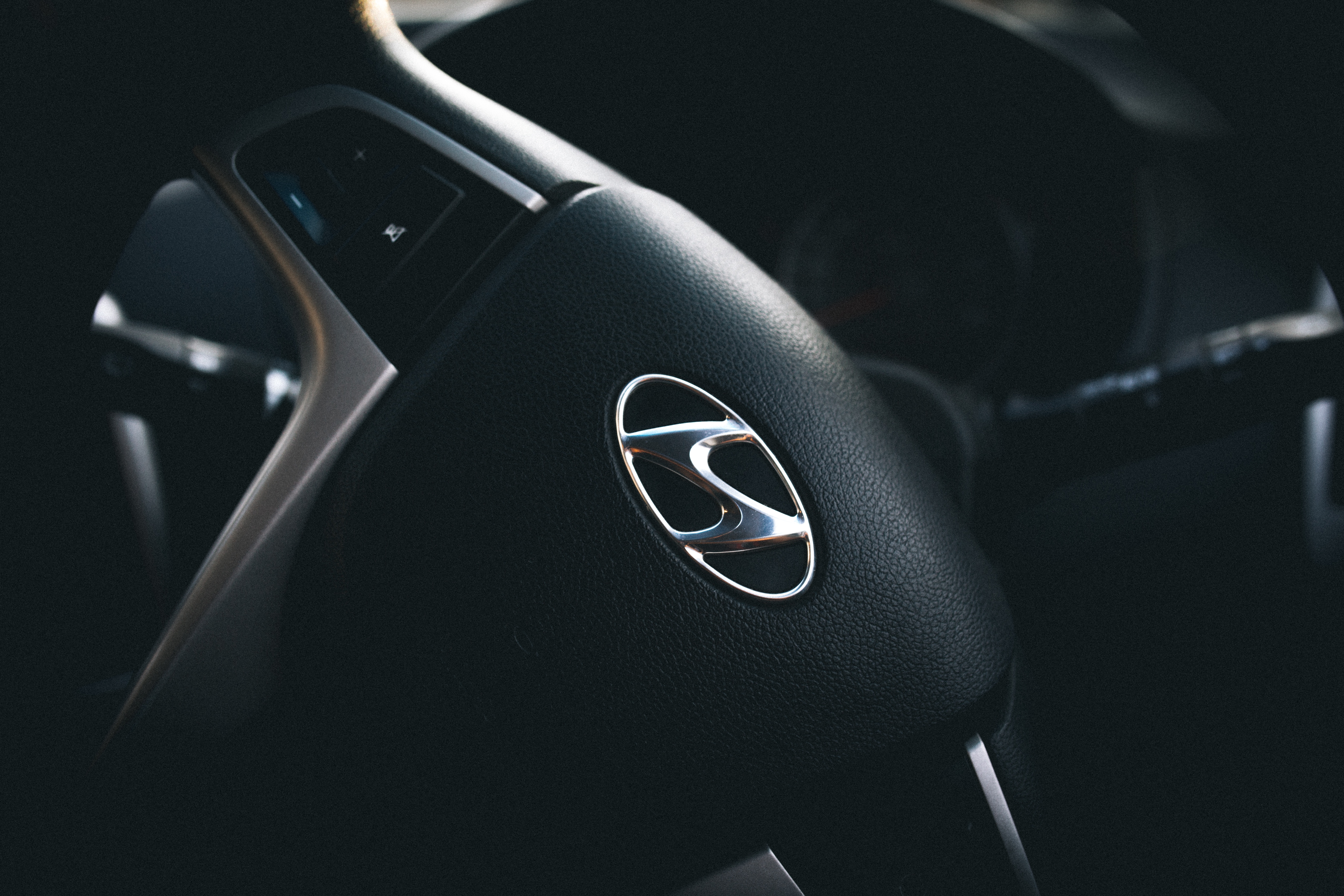
Hyundai’s cars largely rate as average to good in terms of rust protection. The Entourage, in particular, does well in the ratings.
Kia
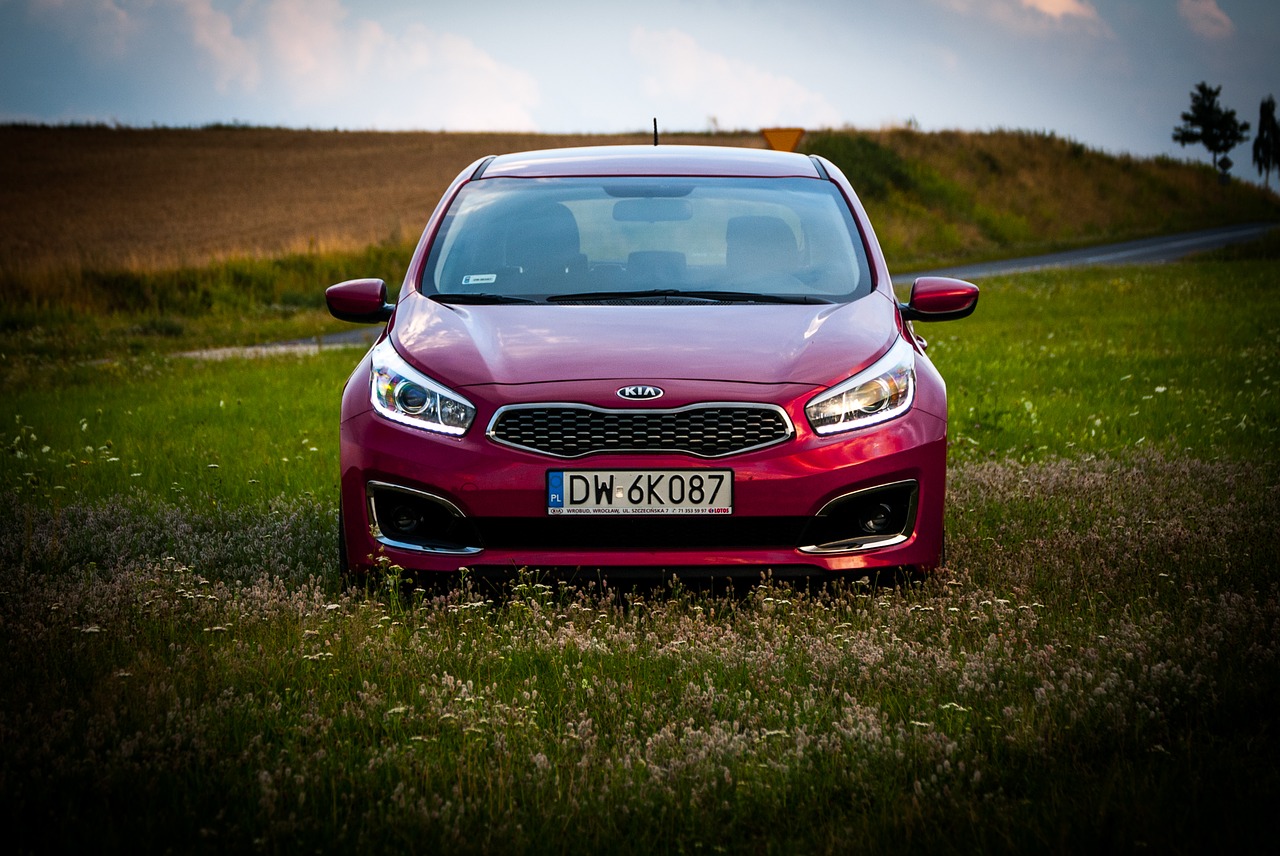
Finally, you can get average protection out of Kia. The Magentis, Optima, Rondo, and Sedona are the best of the Kia offerings in this regard.
What Can Rust Do to a Car?
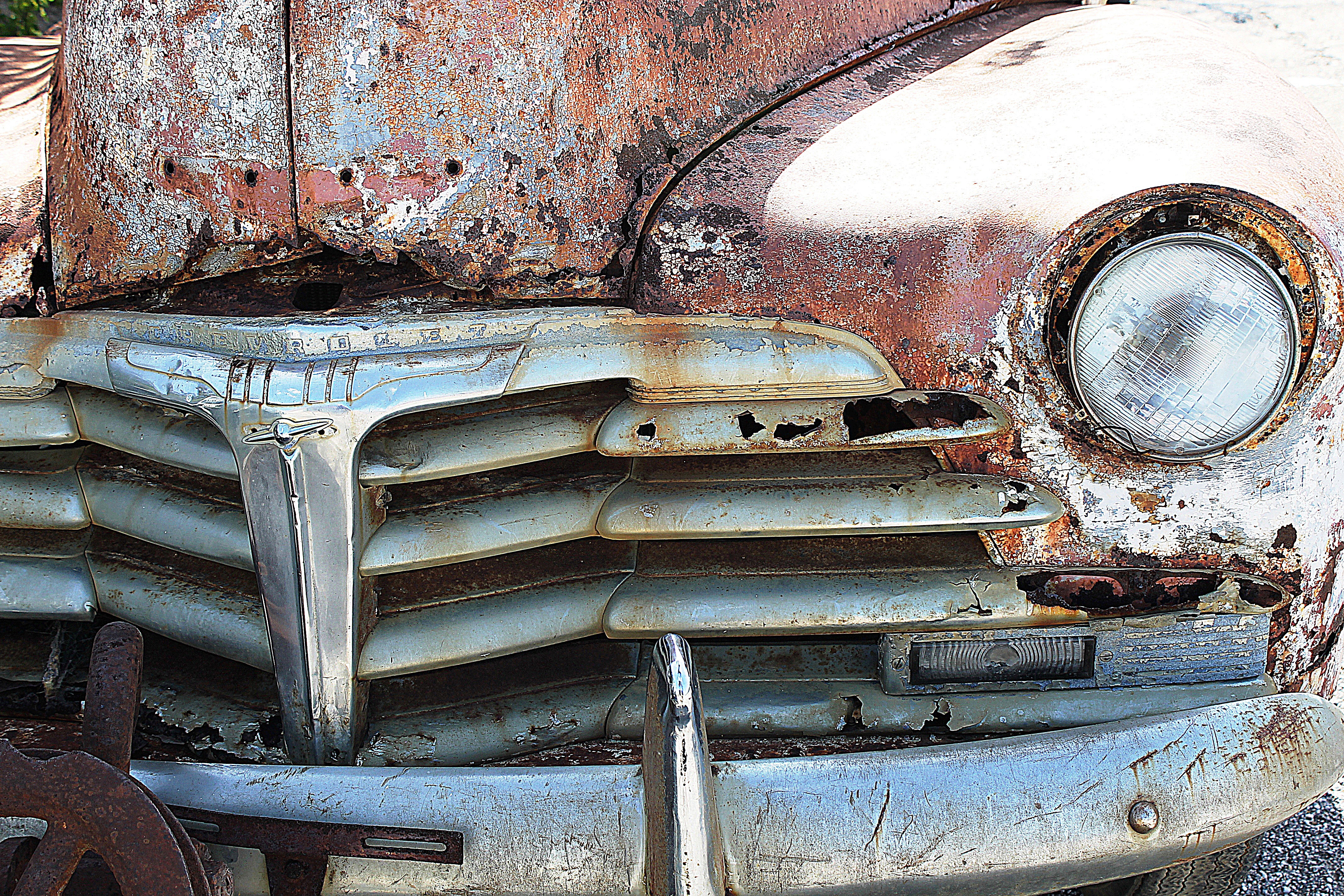
Do you really need to learn how to remove rust from cars? Isn’t it just a matter of cosmetic damage? The answer is yes: you definitely do need to learn how to remove rust from cars, and here’s why.
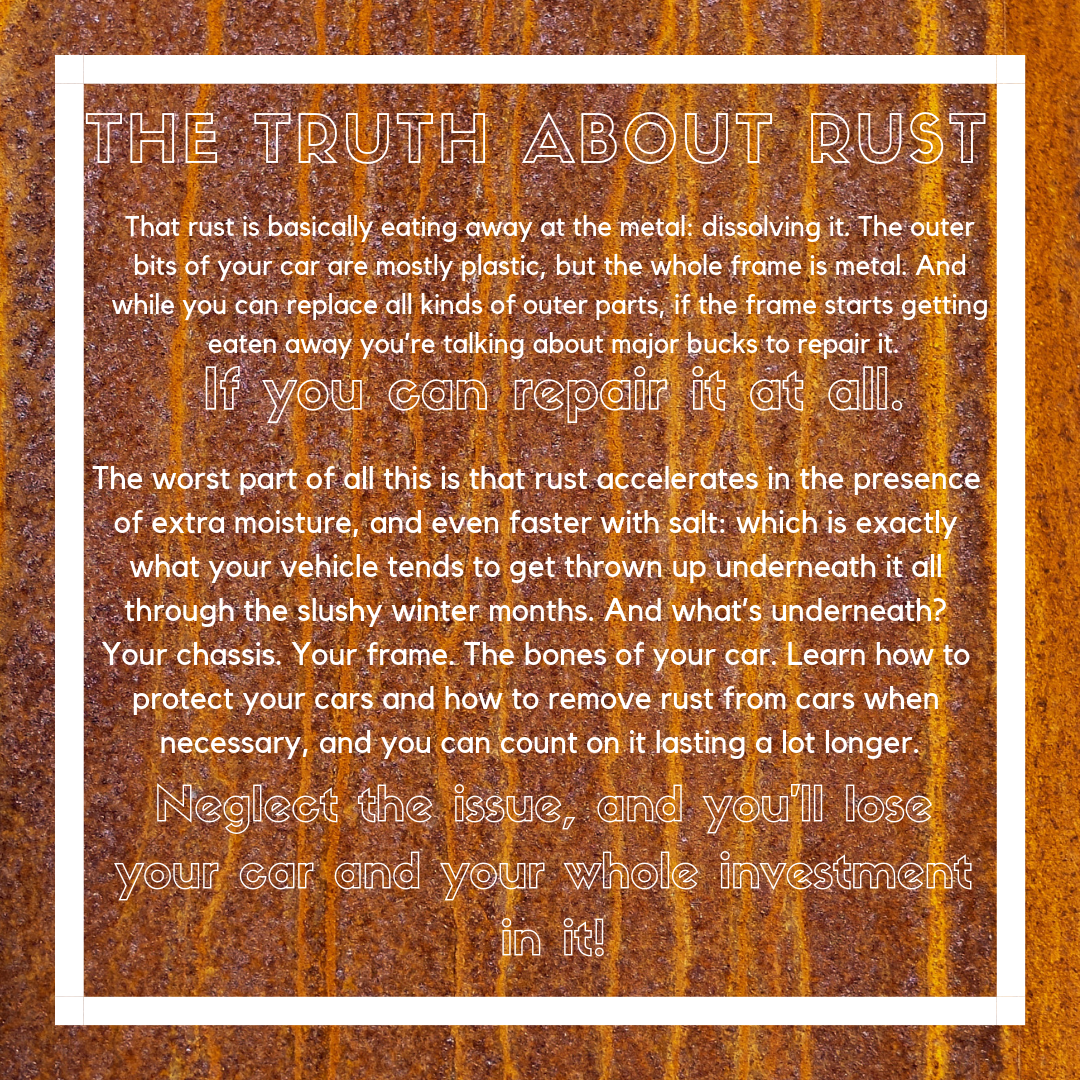
Rust Zones
Certain parts of your car are liable to rust more or faster than others. There are three major areas of vulnerability.
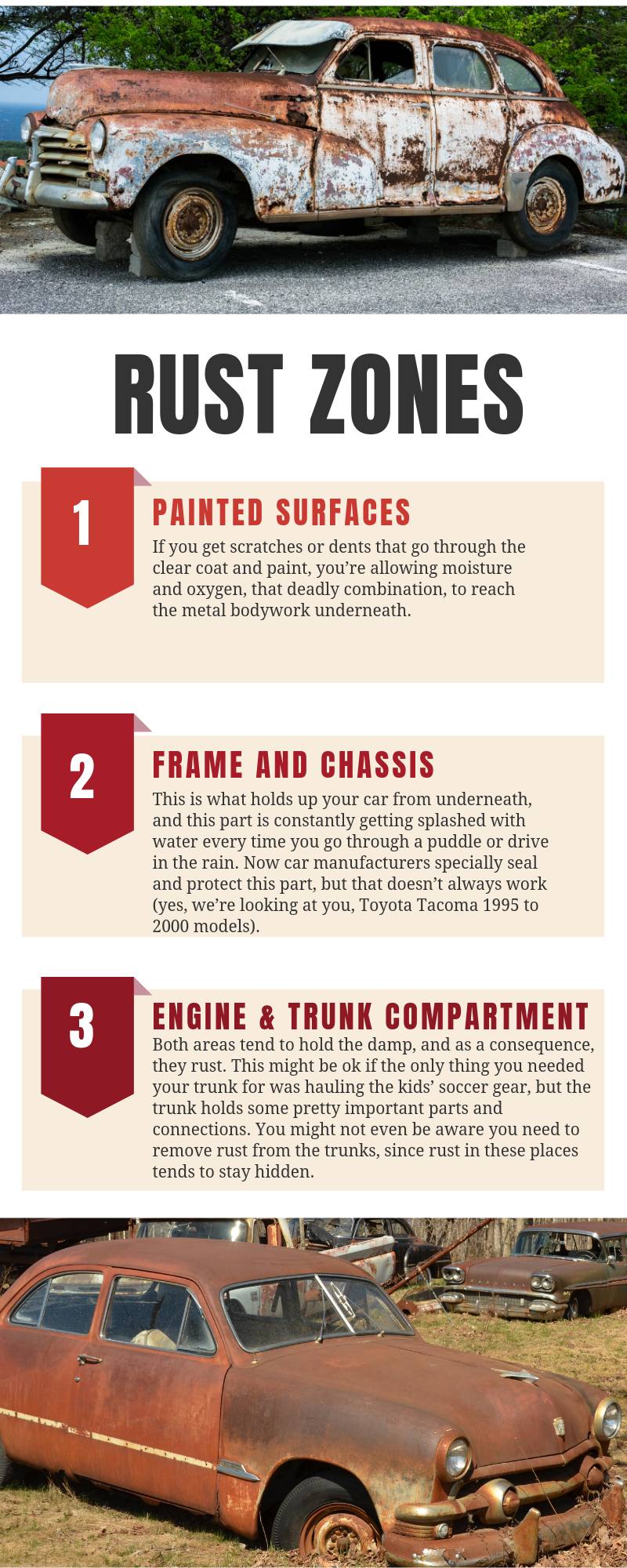
How Likely Is it My Car Will Rust?
Totally depends. Some cars resist rust better than others, and some conditions make a car more vulnerable. If you drive where there’s salt, your car is much more likely to experience rust.
If you’re patting yourself on the back that you live in a place where you never see snow or ocean, you might want to think again: constant humidity will also practically guarantee eventual rust.
What You Need to Get Rust
Rust is a chemical reaction on the molecular level, so it requires an anode, a cathode, oxygen, and an electrolyte. Metal acts as both anode and cathode. Water is the electrolyte, but salt is even more efficient at carrying electrons (what an electrolyte does) and thus rusting your ride.
Your car is also likely to rust if you let nicks and scratches go un-repaired. The sad truth is that it doesn’t matter where you live or what you drive through: cars are all vulnerable to rust, and everyone should know how to remove rust from cars. That said, there are definitely things you can do to minimize rust development.
Preventing Rust
There are some ways to help stop rust before it happens. None of these can guarantee you’ll never have to learn how to remove rust from cars, but they can help you prevent the worst of it.

Know What Can Harm Your Paint
Your paint job is there to protect the body from rust and other damage. You need to do everything you can to protect your paint, and there are a lot of things that can harm the paint that you might not even know about. Here’s what to watch out for:
Rain
No, rain isn’t a friendly shower of crystal clear droplets that help to wash the dust off your car. Raindrops grab pollution from the air and splatter it all over your baby. Rain can actually eat through your paint job over time. Use the garage.
Bugs

When you get back from the camping trip, your front grill and hood are covered in the carcasses of your enemies: the insects. Thing is, insect bodies are acidic. Don’t let them sit on your car or they’ll wear away at the paint. Also, the longer they sit, the harder they are to get off.
Construction
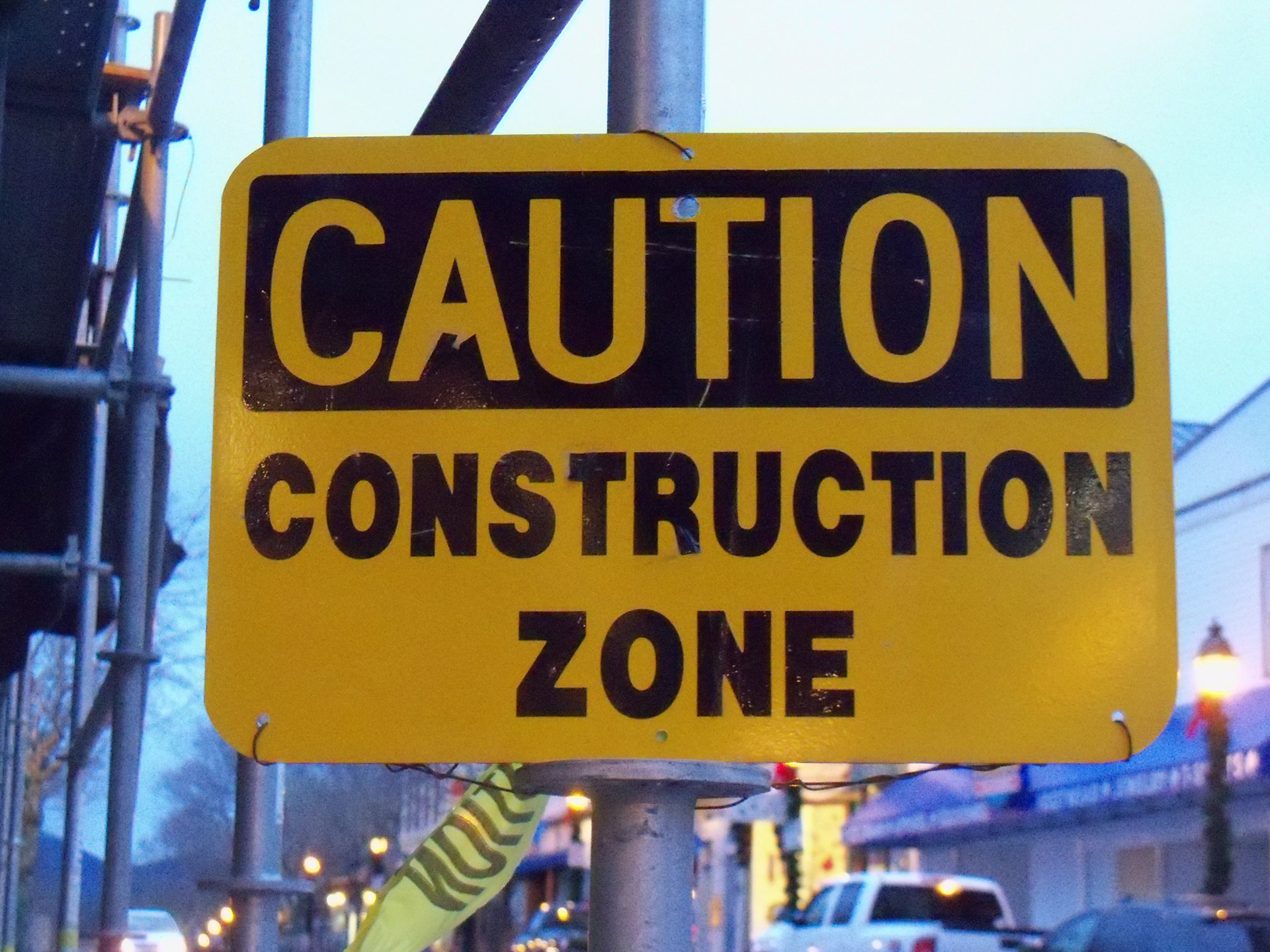
When you’re crawling through the third jammed up construction zone of your trip, plotting how to exact revenge on the line cutter who zoomed up before trying to merge, you might forget that all those little bits of debris and tar gunk can rip up your paint job.
Fun Stuff
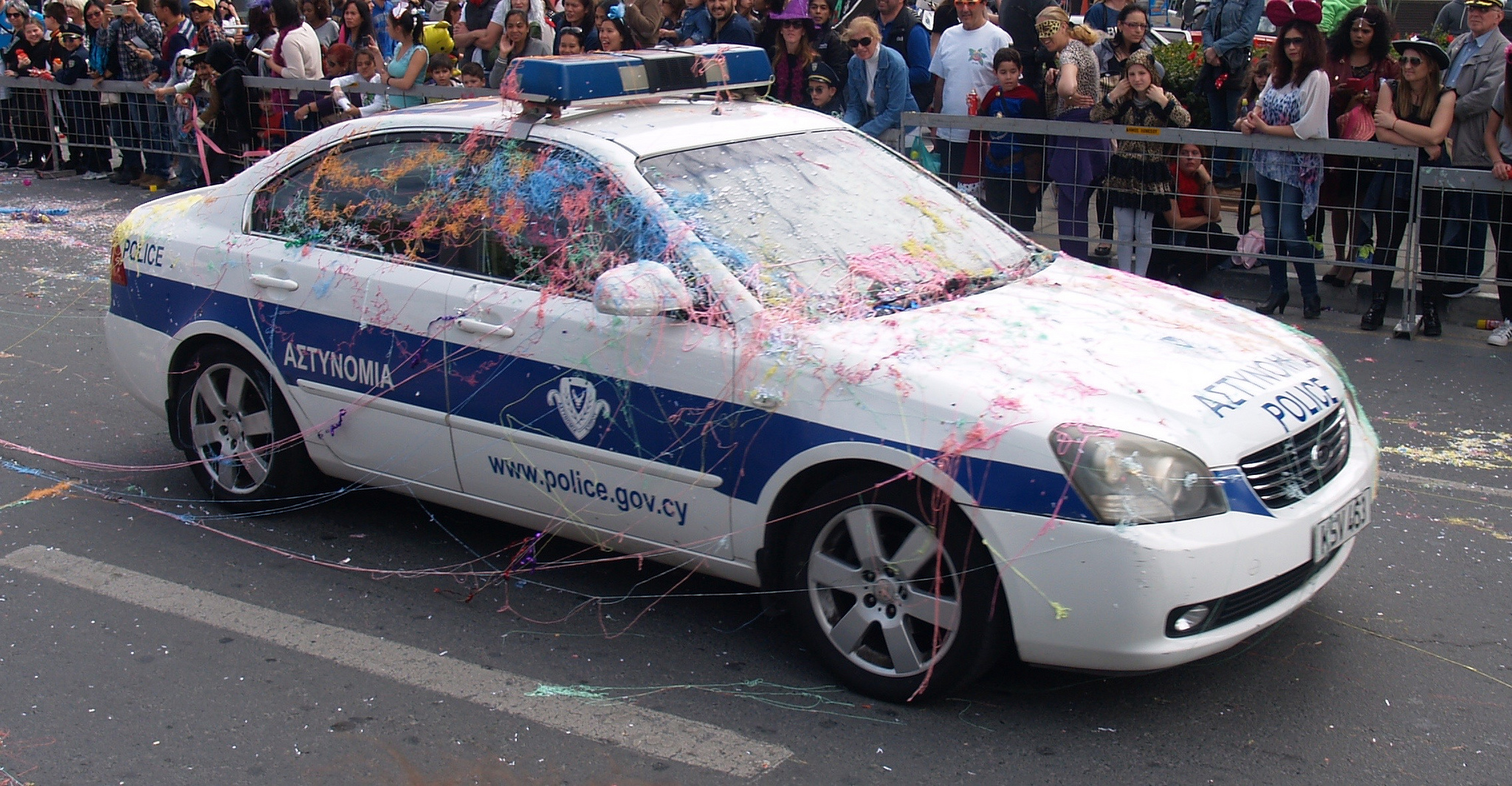
Cyprus police car covered in silly string; Image from Attribution 2.0 Generic (CC BY 2.0) by Michael Homan via Flickr
If you’ve just been married and your friends have showered your car in shaving cream or silly string to show you how much they care, they’re actually wrecking your car. Silly string has to come off while it’s still wet. Once it’s dry, it will peel your paint off when you remove it. AS for shaving cream, it will permanently discolor the paint and damage it.
Bird Droppings

Another acidic substance: don’t let this stay on your car for very long. Oh, and if you’re wondering whether those pigeons are deliberately targeting your car with their poo, don’t worry. They are.
How Fast Does Rust Spread?
Do I need to learn how to remove rust from cars today, or can it wait till next month? If you search the Internet, you’ll find lots of people asking this question. Everyone wants to know the answer—but it’s really hard to answer this question for any one car or individual. There are too many factors involved. It’s enough to know that it happens fast.
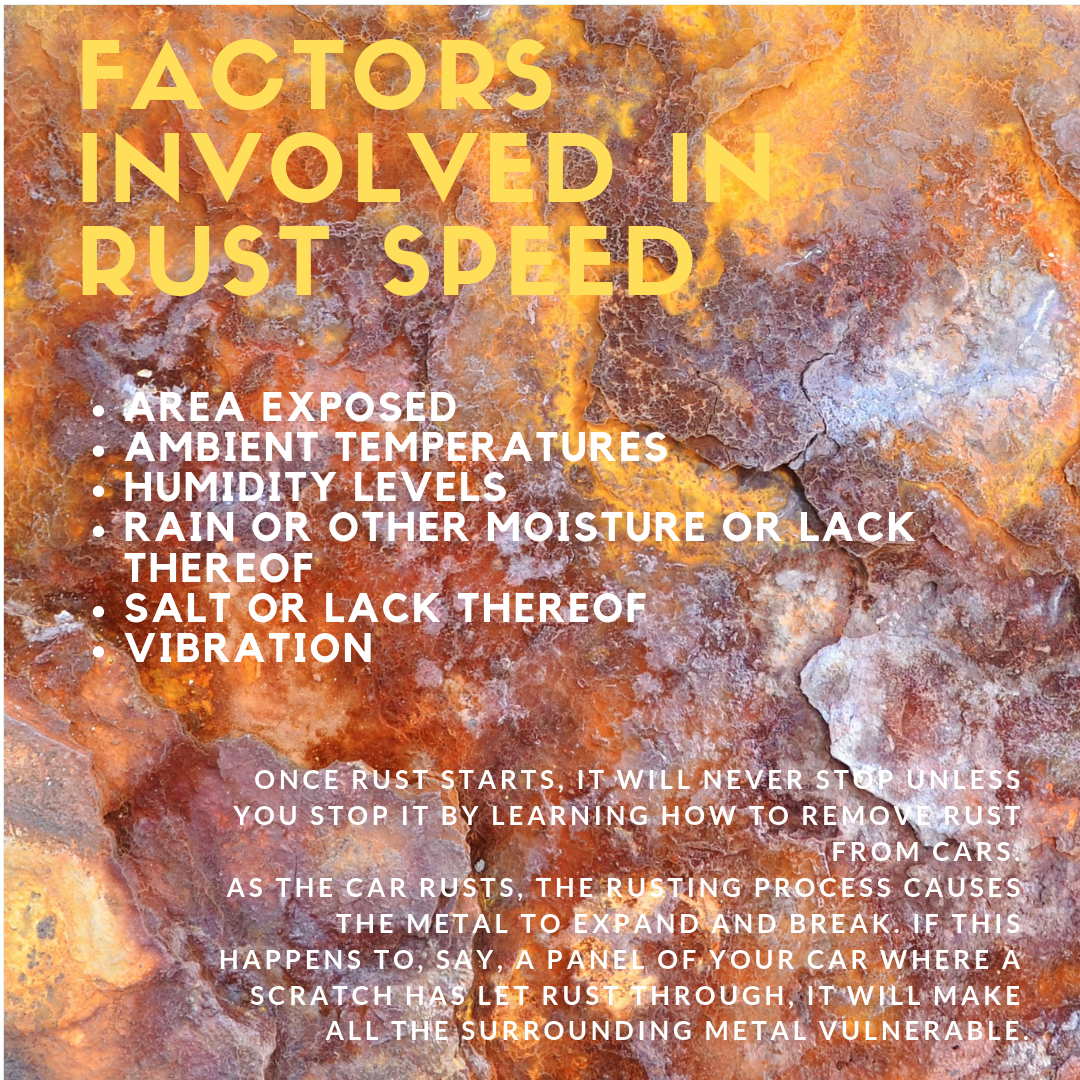
What Are the Signs of Rust on Cars?
“What?” we hear you crying now. “Surely the ‘sign’ is the red rust!” Ok, yes, that’s one sign of rust. But that’s not all you should look out for. Here are some other telltale signs:
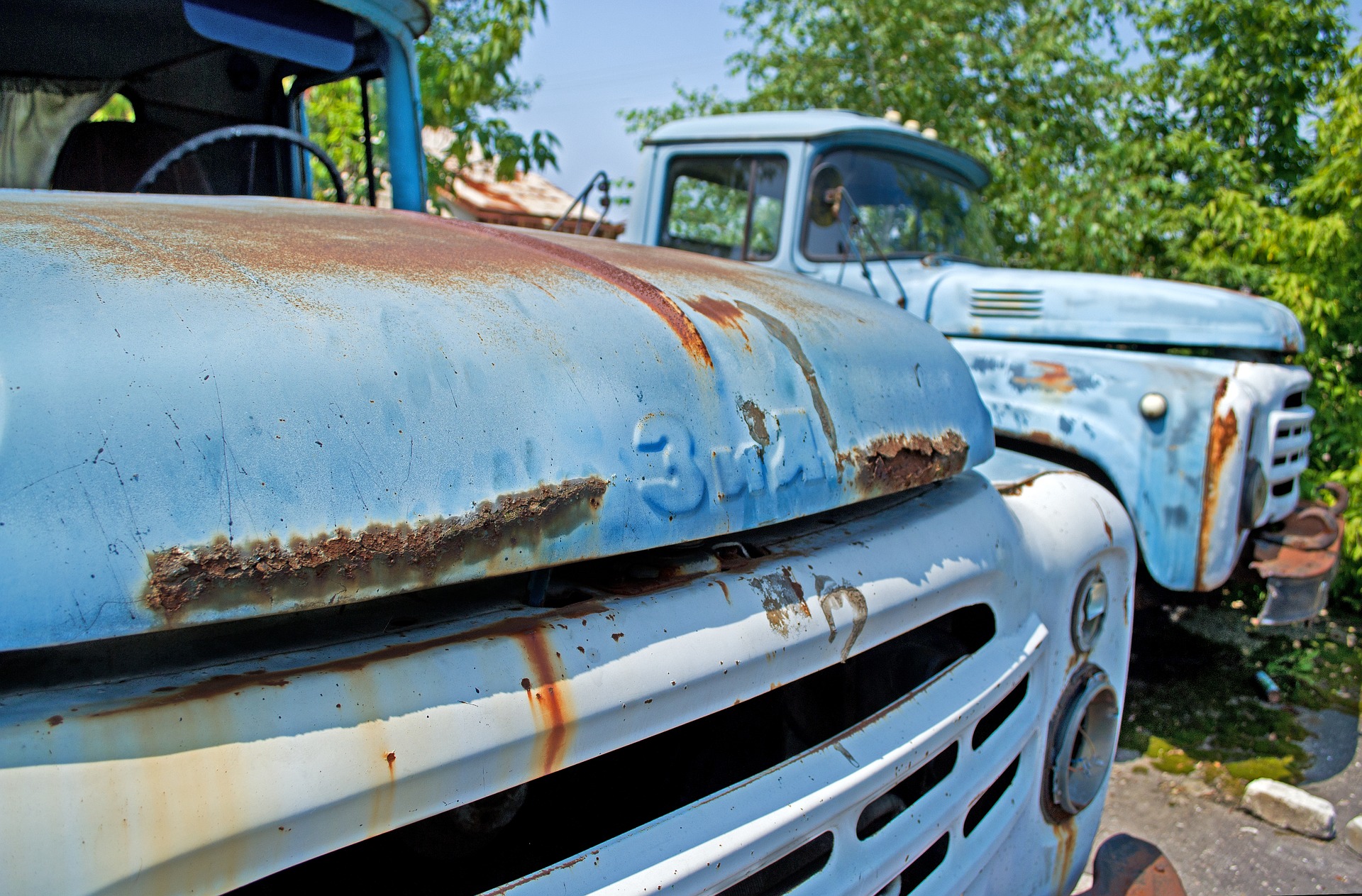
- What looks like a little brown stain on a metal fender
- Bubbles and pits in your paint job
- Wet floors after driving through a puddle
- Rust colored water spots, even if what’s right underneath isn’t rusted
How to Remove Rust From Cars
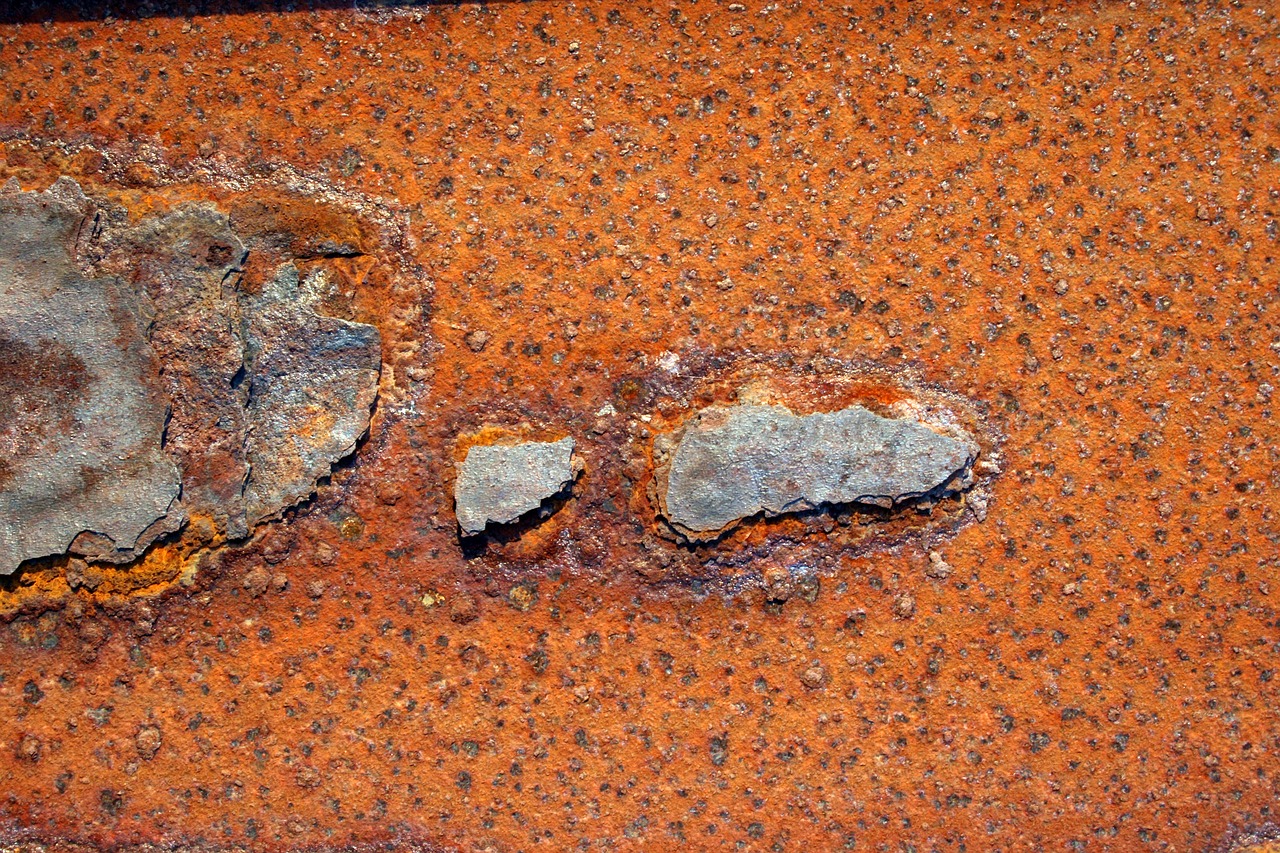
It’s not all bad news, though, and that should be encouraging. The good news is that if you get cracking on getting rid of rust, you can protect your vehicle and stop the process. The bad news is that if the damage is too far along, you’ll need to get a professional who knows how to remove rust from cars.
The reason you might need a professional is that too much rust in the wrong places can seriously corrode the body of the car such that it is no longer safe to use. If you’re not an expert in how to remove rust from cars, you may not be able to get it off and still have a safe vehicle afterward.
Get the Right Equipment
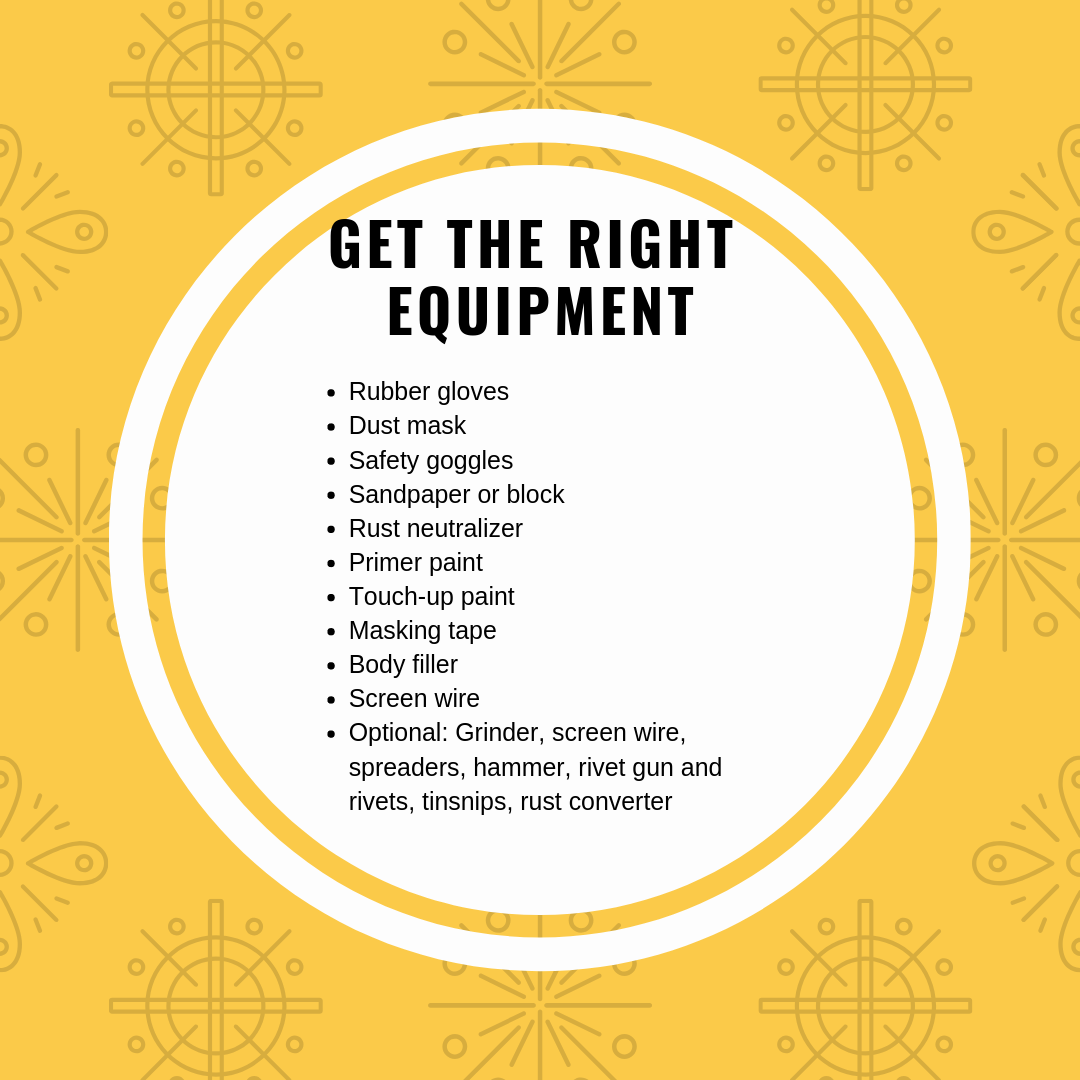
Fix Minor Damage
If you aren’t facing a lot of rust, sanding it away is probably your best bet. Depending on how much elbow grease you want to put into it, you can use sandpaper or a sand block. If you need some help, use a grinder or a drill with sander bits.
Put on your safety gear and then sand over the area. Once the rust is gone, brush away any residue, put on a dab of rust neutralizer, and then (using the masking tape if necessary), apply the touch-up paint. Let that thoroughly dry and then apply a primer coat.
If you don’t want to sand away the rust, try using a rust converter. This is a chemical that reacts with the rust and turns it into iron tannate. This stable substance doesn’t corrode, and the rust converter comes with its own protective polymer.
Deeper Damage
If your rust problem has gone all the through the car, eating a hole in the body, you’ll need to grind or snip away every affected part. Put the screen wire into the hole: this will be the foundation for your body filler, which you’ll spread over the area.
Once the body filler is hard and completely dry, sand it down level with the car and add primer and paint. Once again, we have to reiterate: if the frame has any rust, you need to take your car to a mechanic and get it fully checked out.
How to Remove Rust From Car’s Chrome
The chrome finish on those wheels is pretty protective, but once you do get a whole or crack in it, rust usually blooms up through it quickly. Chrome can take a beating when it comes to cleaning: but a word to the wise. You need to make sure you’re dealing with actual chrome.
To save on costs, some car makers just use a shiny chrome paint instead of actual chrome. If that’s the case, cleaning it hard will scratch the paint off and cause the very problems you’re trying to avoid. Once you’re sure you have real chrome, here’s what to do:
Clean It
All you need is a simple soap.
Get Some Chrome Polish
You can use steel wool and WD-40 and a lot of elbow grease, following the video above. Alternately, use chrome polish. It costs a bit more, but it works fast and is easy to use.
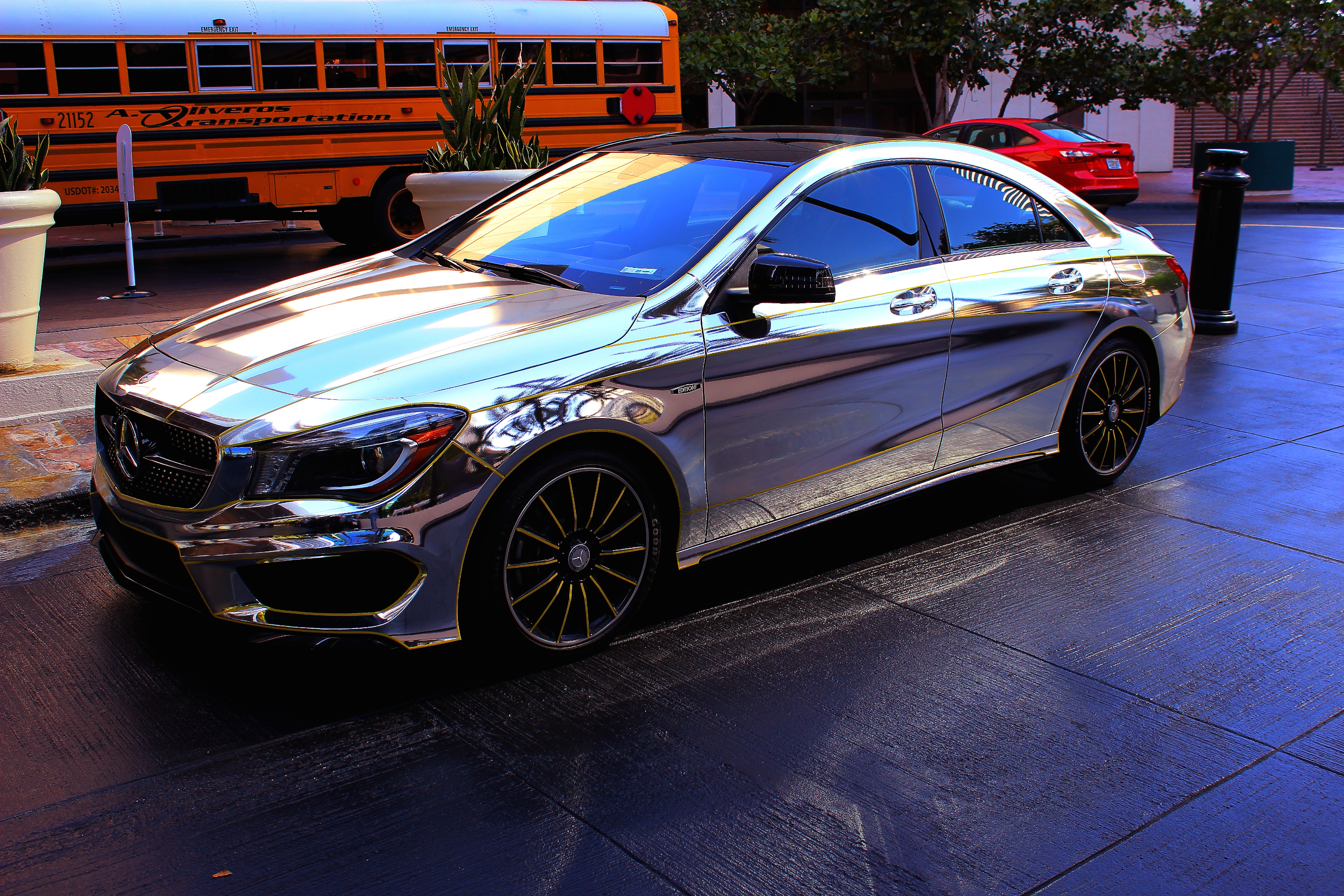
Apply
Use a rag to apply the polish and keep rubbing until the rust is gone. Once the rust is gone, wipe the area with a clean rag. At this point you’re probably done: check if your chrome polish comes with sealant. If it doesn’t…
Seal With Car Wax
Once everything is dry, apply a quality wax. Synthetic polymer car wax is better than carnauba wax for this application.
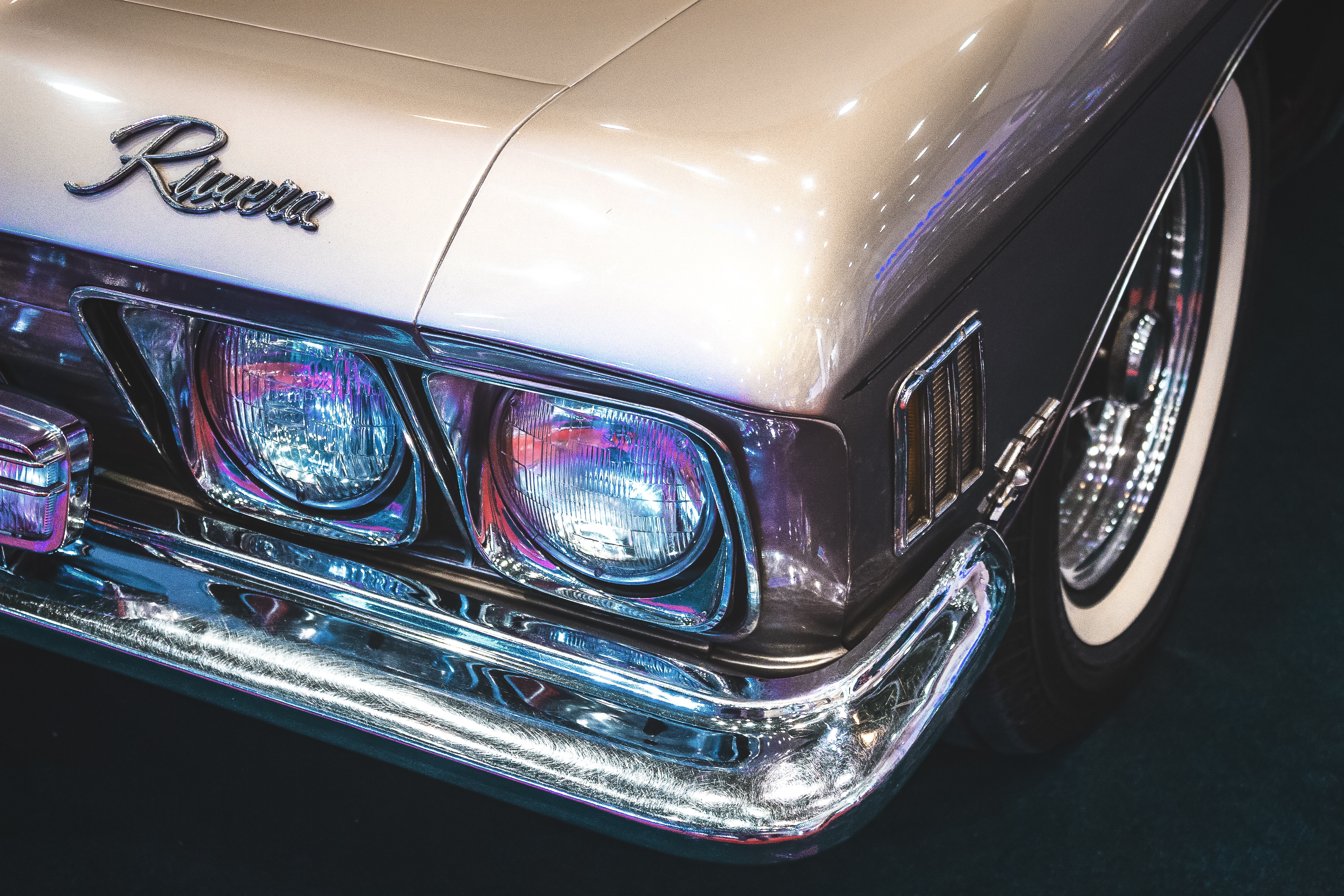
Should I Buy a Rusted Car?
The car of your dreams has JUST come up for auction. You go to inspect it and find rust. Should you buy it?
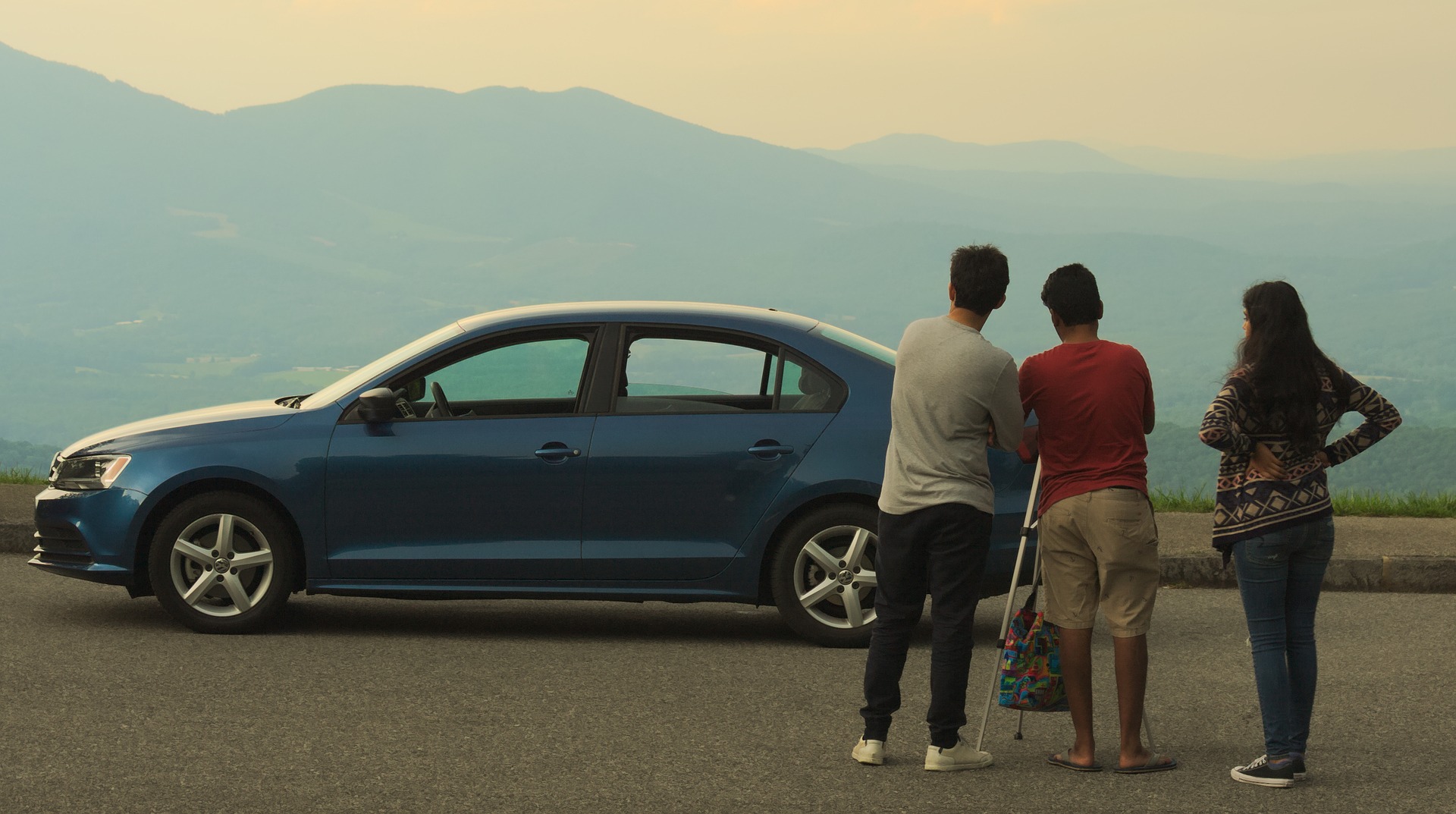
There are a number of things to bear in mind when you’re considering buying a used car, and rust is one of them. Rust can be a really serious issue, so if you see rust, you should always look for closely to find out how extensive the problem is. However, it doesn’t have to be the end of the deal. The key is finding out if the rust is cosmetic or not.
Where to Look For Rust
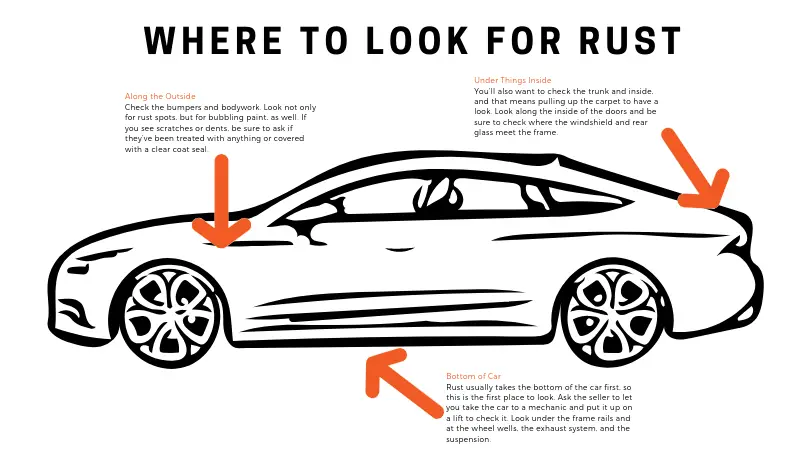
How Do Manufacturers Protect From Rust?
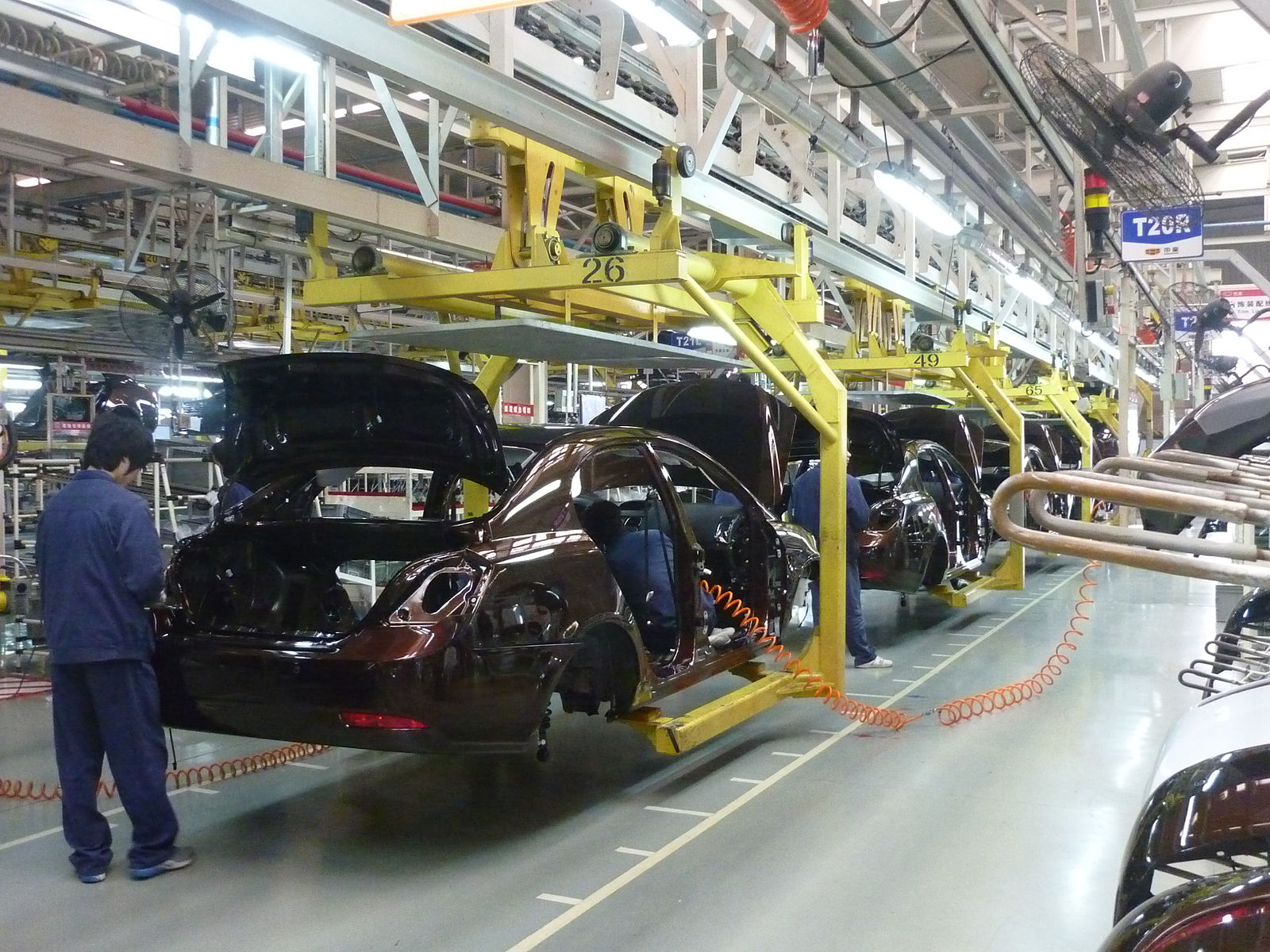
Car assembly line in Beilun District, Ningbo; Image from Creative Commons Attribution-Share Alike 3.0 Unported by Siyuwj via Wikimedia Commons
Your car’s manufacturer isn’t so much interested in how to remove rust from cars: they’re interested in how to stop it from happening in the first place. They’re getting better and better at it, but there is still some work to be done.
All the steel used in modern cars is given a very durable coating as it comes off the manufacturing roll. Once it has all been put on the car at the assembly location, the whole body will be dipped in anticorrosion agents before the painting begins.
Most modern cars also get an extra thick coating applied to the underside since that part won’t get a paint covering. The rest of the car gets primer, paint, and then a clear coat to protect the paint.
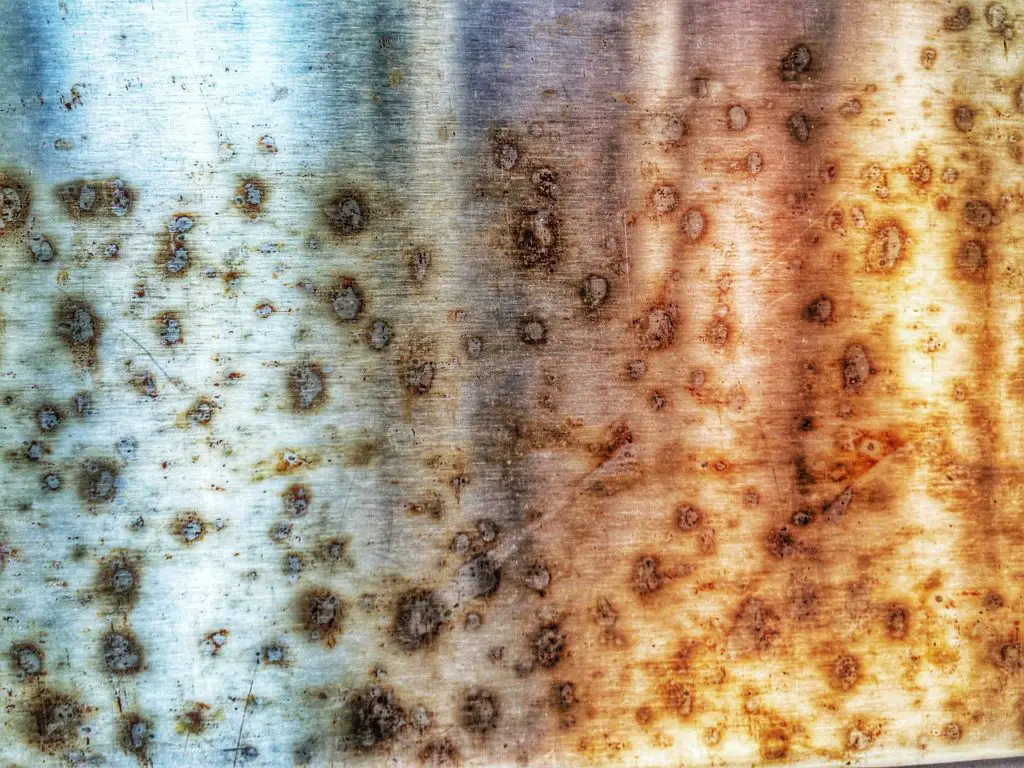
Carmakers are also looking for ways to use more aluminum and magnesium in cars. Both of these do rust, but they do it so slowly that even if you got a car on the day you were born and kept it till you were 100, you wouldn’t notice any rusting. The problem is that right now using more aluminum and magnesium for cars is prohibitively expensive.
Rust and Antique Cars
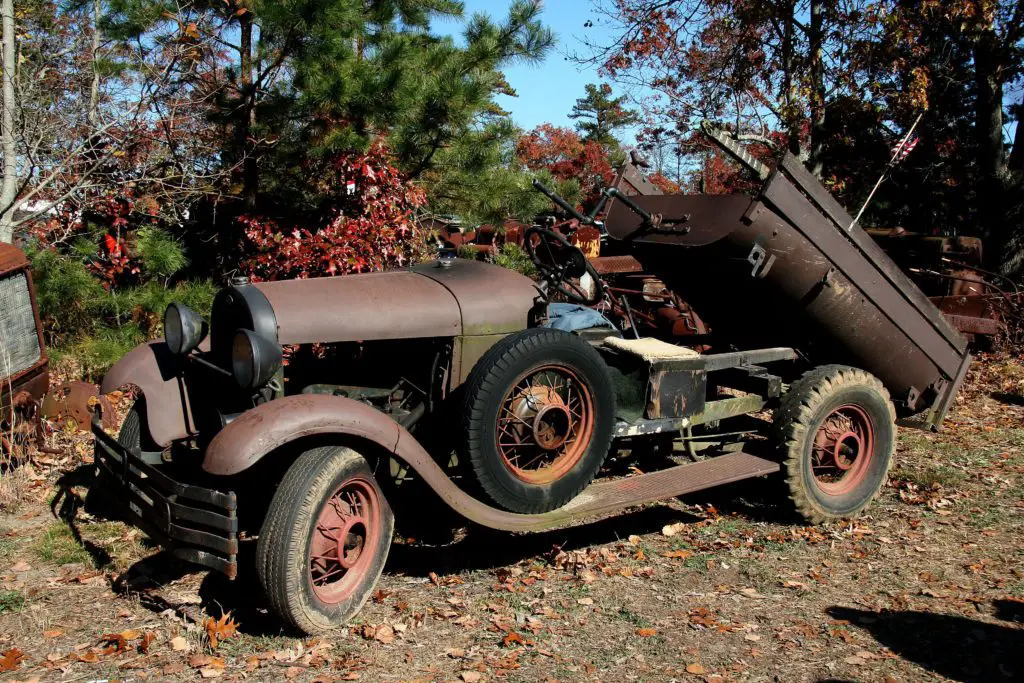
Classic cars have two problems when it comes to rust. First, they are just plain old, and the older a vehicle is, the more likely it is to rust at all. More importantly, they were made in a time when car makers didn’t know all the tips and tricks they do now for keeping rust at bay. They may have a lot of rust that’s difficult to get off.
In fact, the situation with classic cars is so bad that some people will tell you never to buy a classic car if it lived in a coastal area: the assumption is that the salty ocean spray will have caused rust issues that you can’t get past.

But classic cars are classic for a reason, and if you have your heart set on one, you can’t necessarily let rust stop you. Removing old rust from a classic car is a bit of a different process than removing it from a new car made under modern conditions. Here’s how to do it.
Get Your Tools
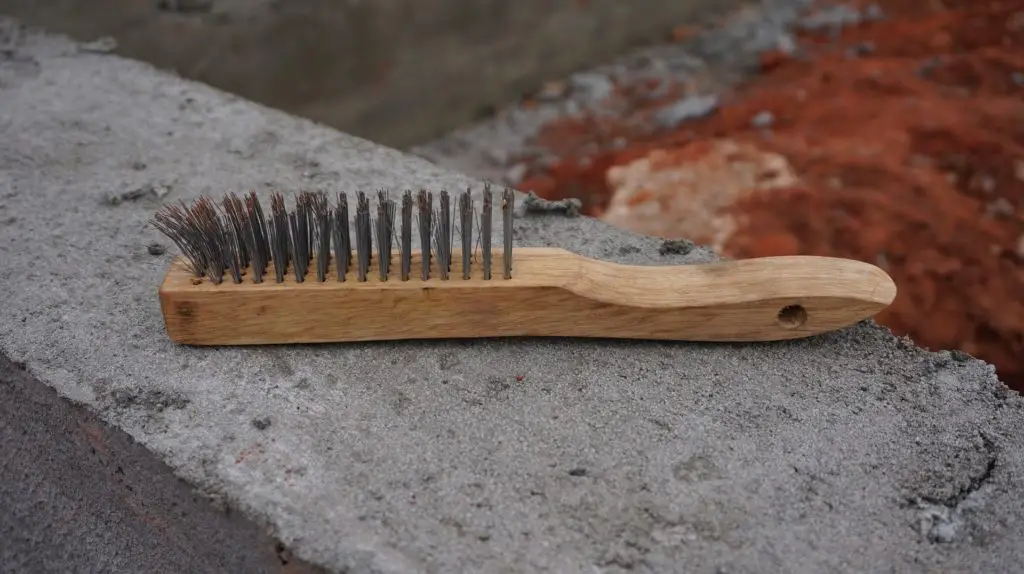
- Scrub pad
- Wire brush
- Salt
- Lime juice
- Naval jelly
- Rubber gloves
- Mineral oil
How to Remove Rust From Cars Made Before the Modern Era:
First Layer:
- Apply mineral oil to the whole rusted area and let it sit 10-20 minutes
- Scrub with wire brush and scrubber
- Use a clean cloth to wipe away rust and oil
Second Layer:
- Mix one part lime juice to two parts salt
- Apply paste to rusted area and wait two to three hours
- Scrub with wire brush and scrubber
- Use a clean cloth to wipe away paste and rust
Last Layer
- Put on rubber gloves
- Apply naval jelly to recalcitrant rust spots
- Let it sit 10 minutes
- Remove with scrub pad and cloth
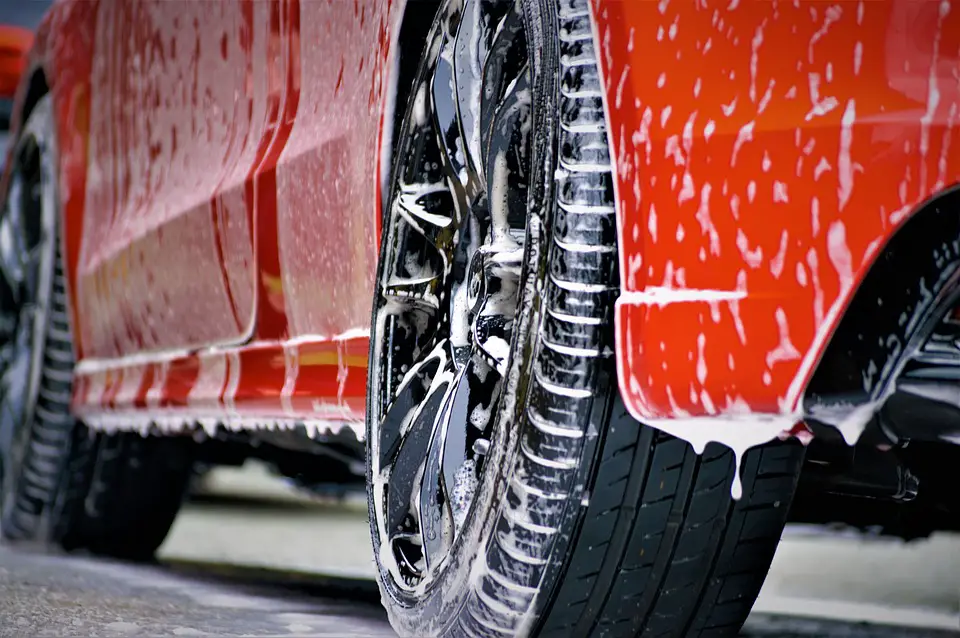
After you’ve removed all the rust, you should thoroughly clean the car and get it dry as quickly as possible. Once it’s dry, you can paint it and apply a clear coat.
The Rusty Truth
Some amount of rust is almost inevitable, but there’s no reason your car ever has to be written off as a loss because of it. You can prevent a lot of rust, and you can be vigilant about finding and removing it.
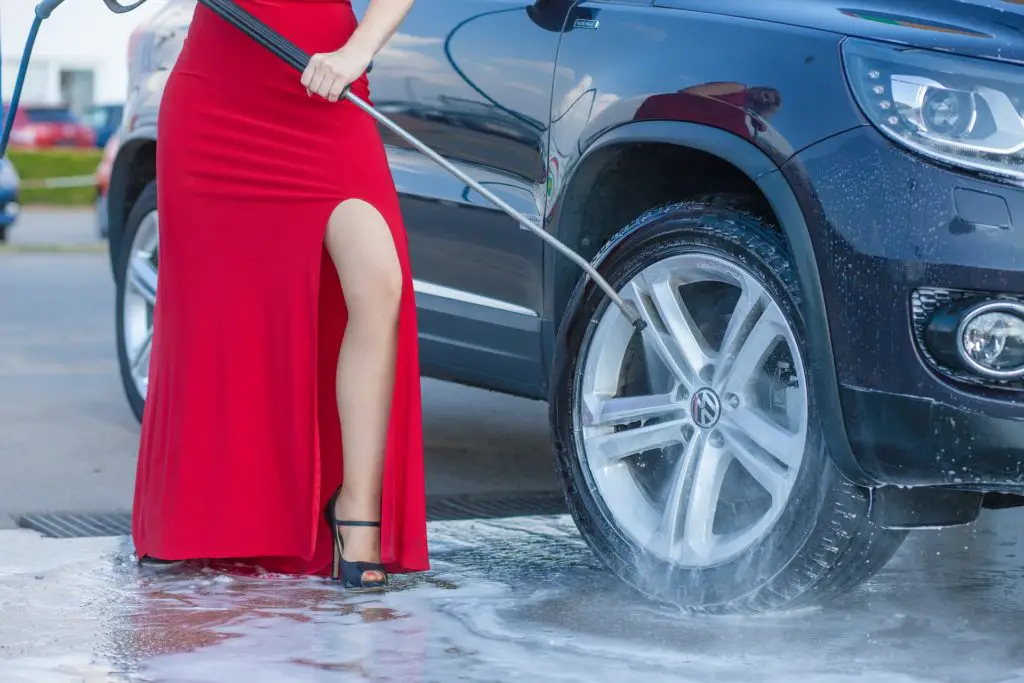
Rust doesn’t even necessarily mean you can’t buy a used car, so long as you can verify there’s no damage to the frame. Rust can destroy, but it doesn’t have to. Now that you know what to do, go forth and protect your chariot!

